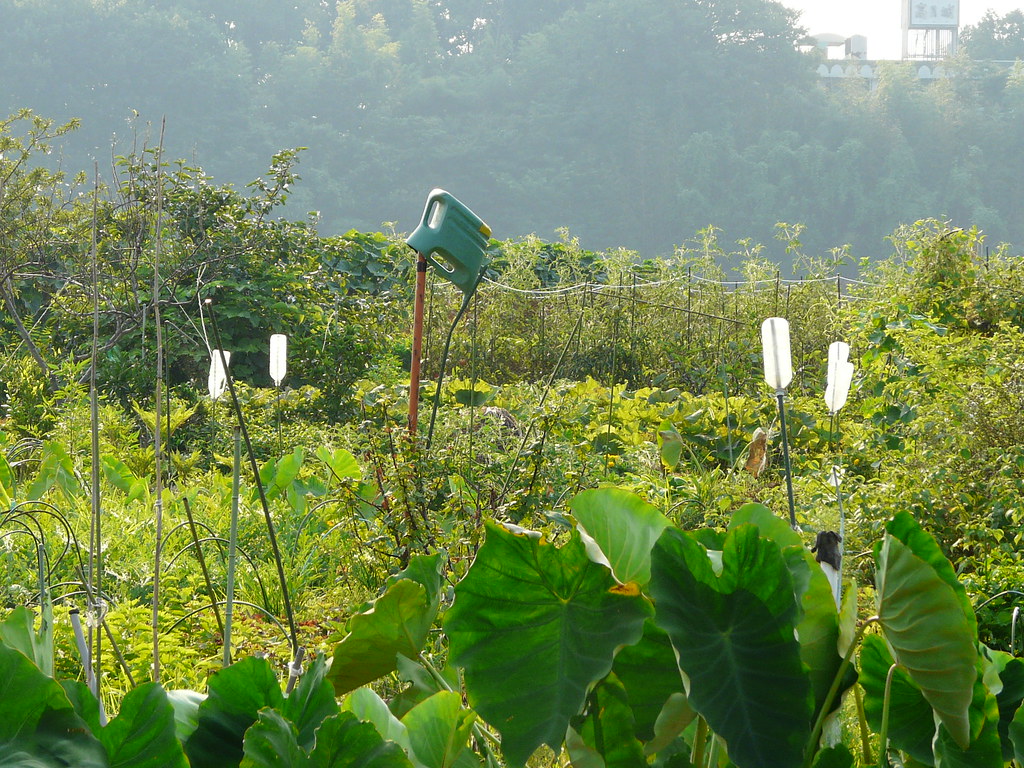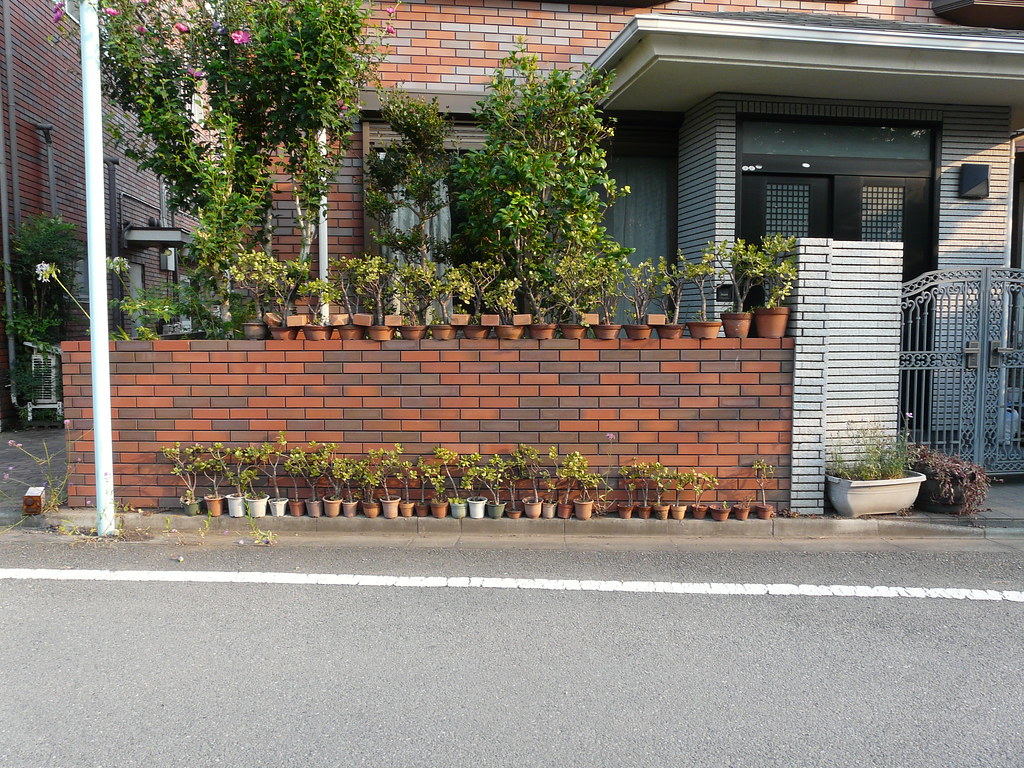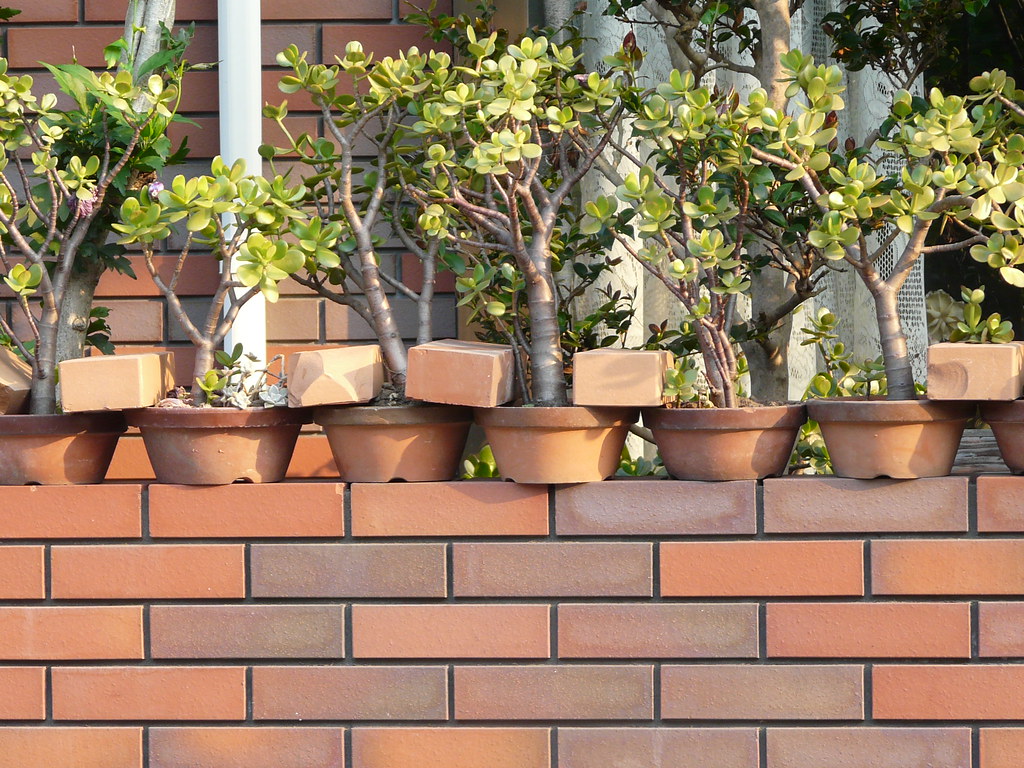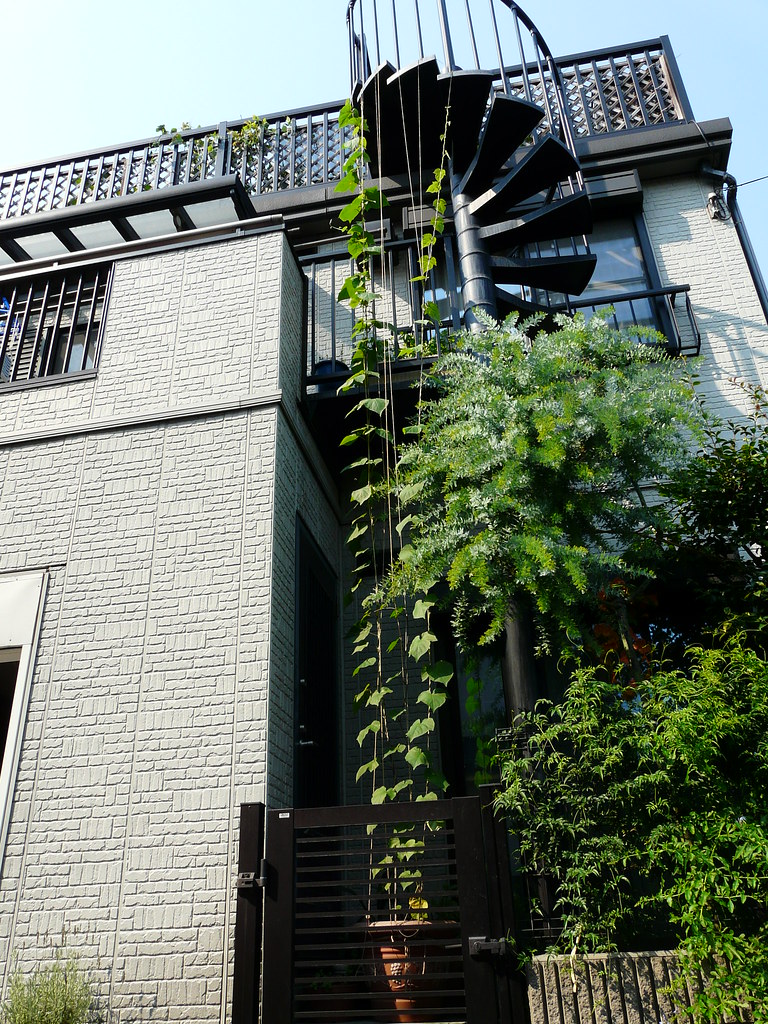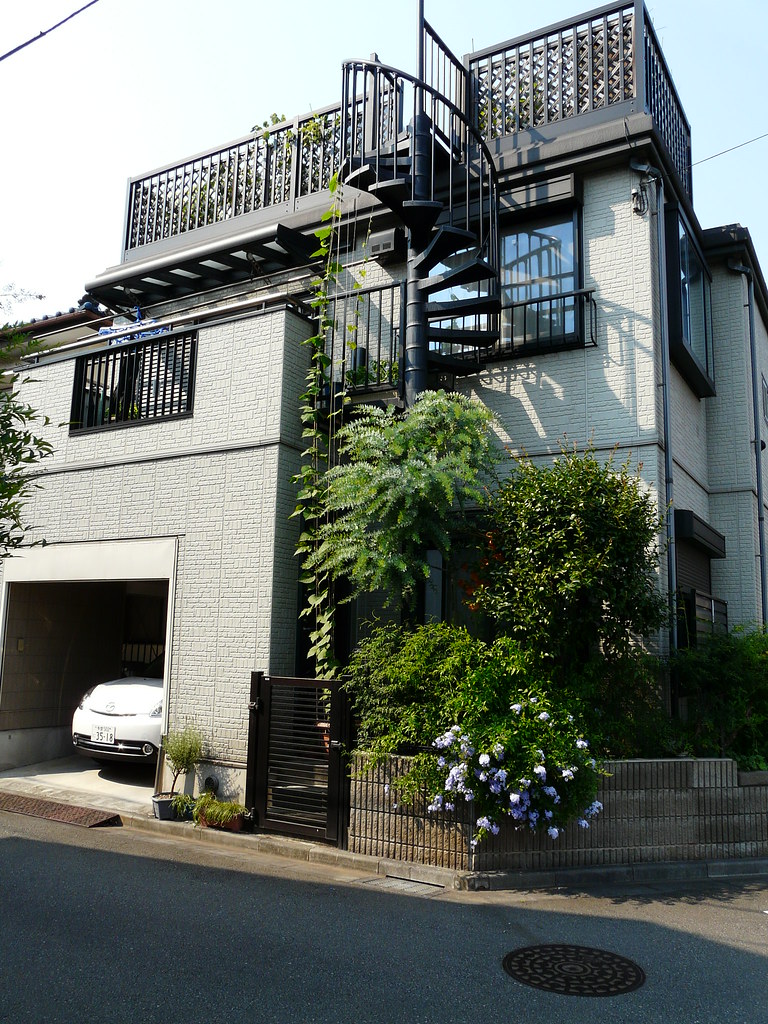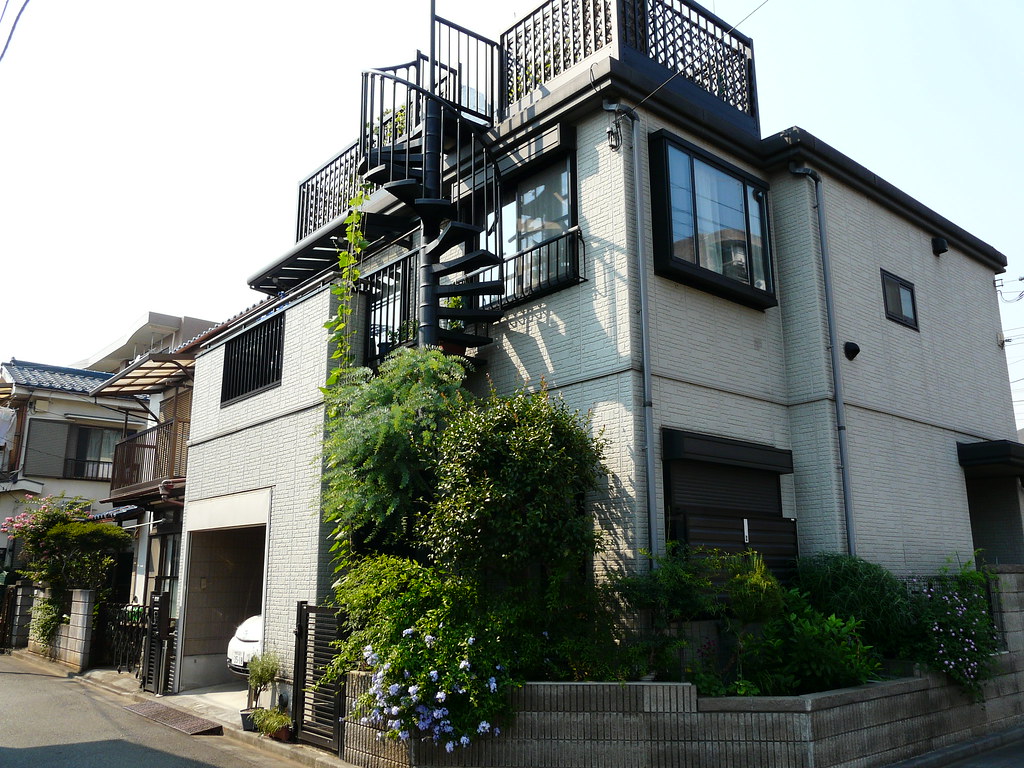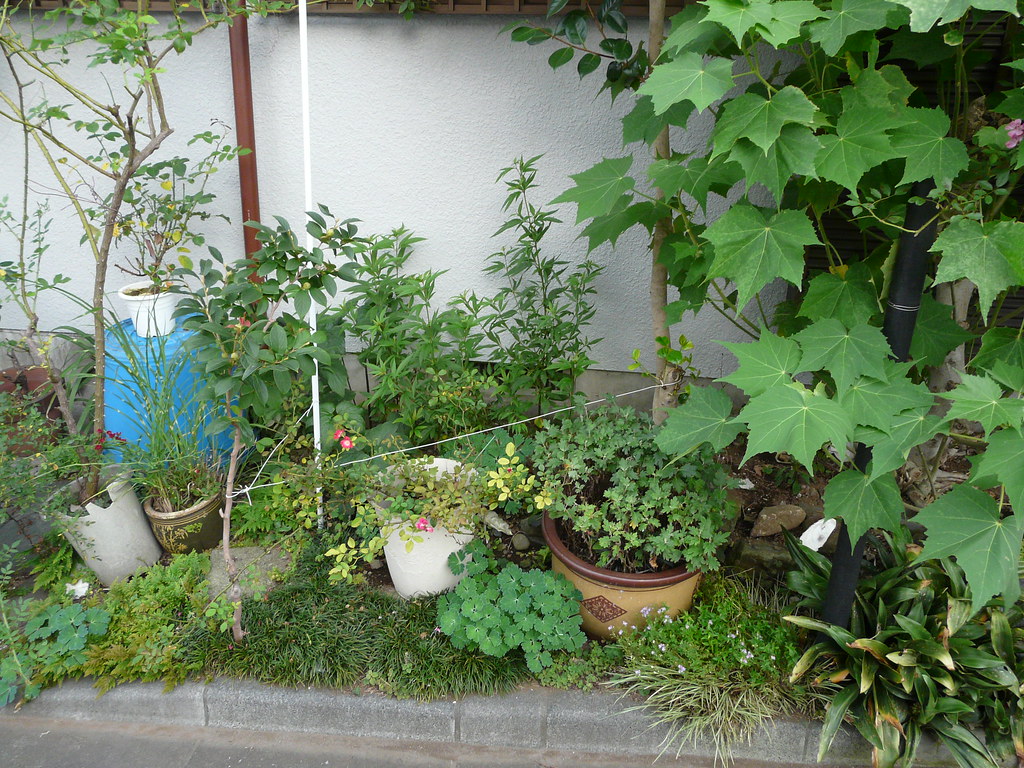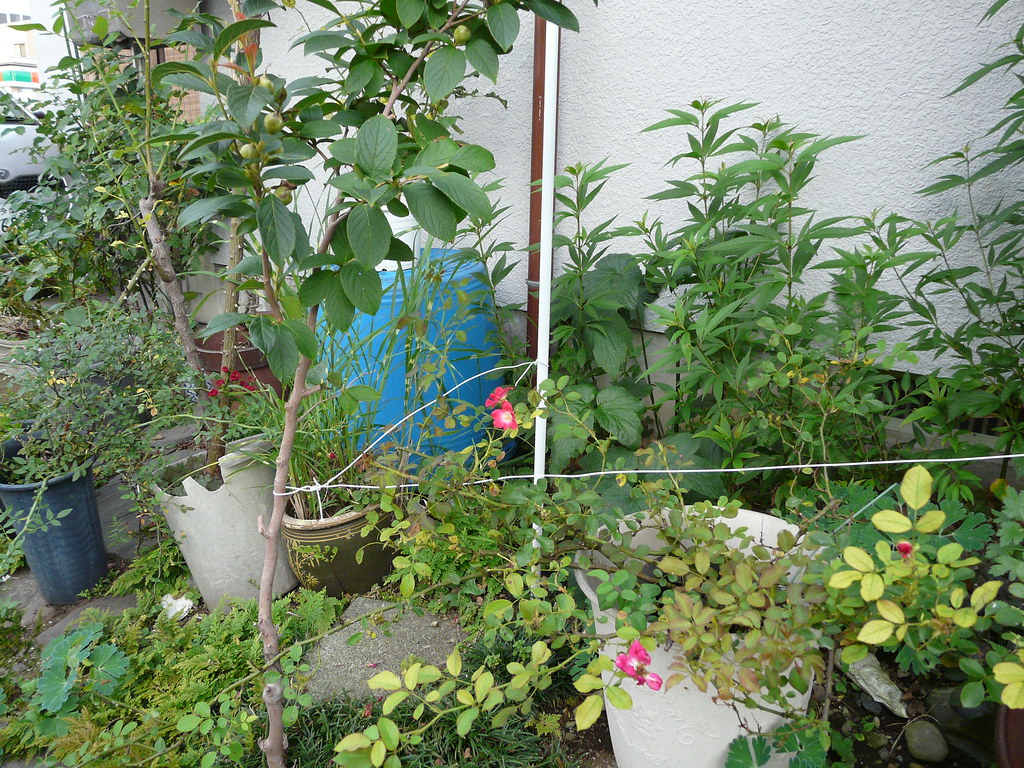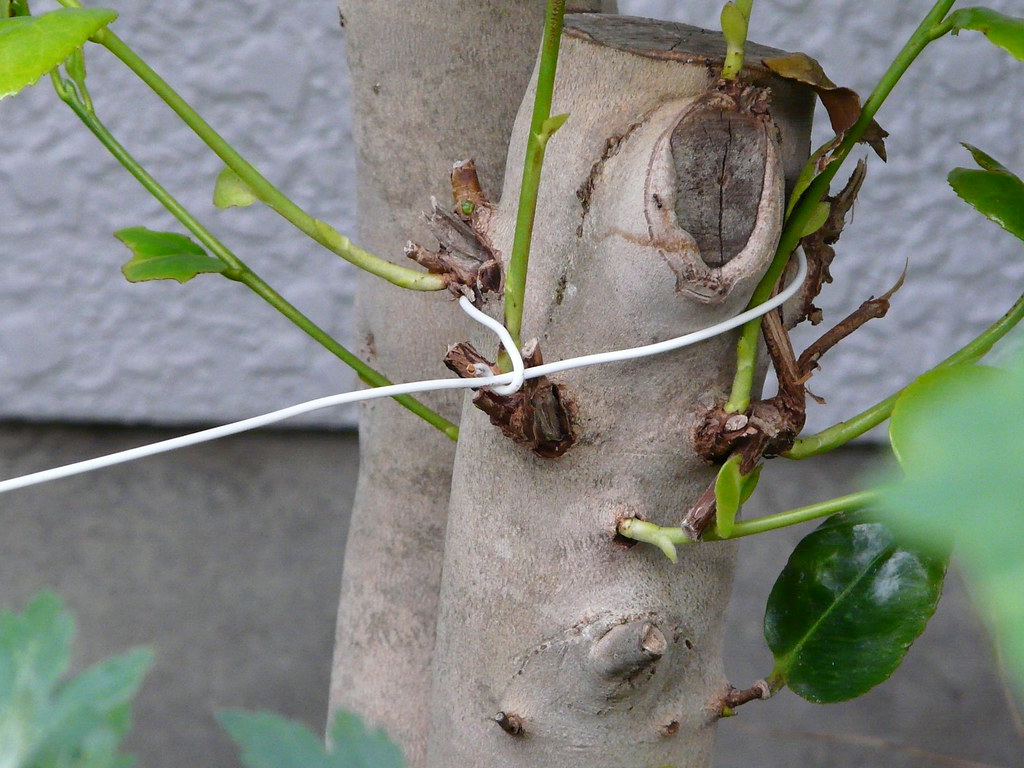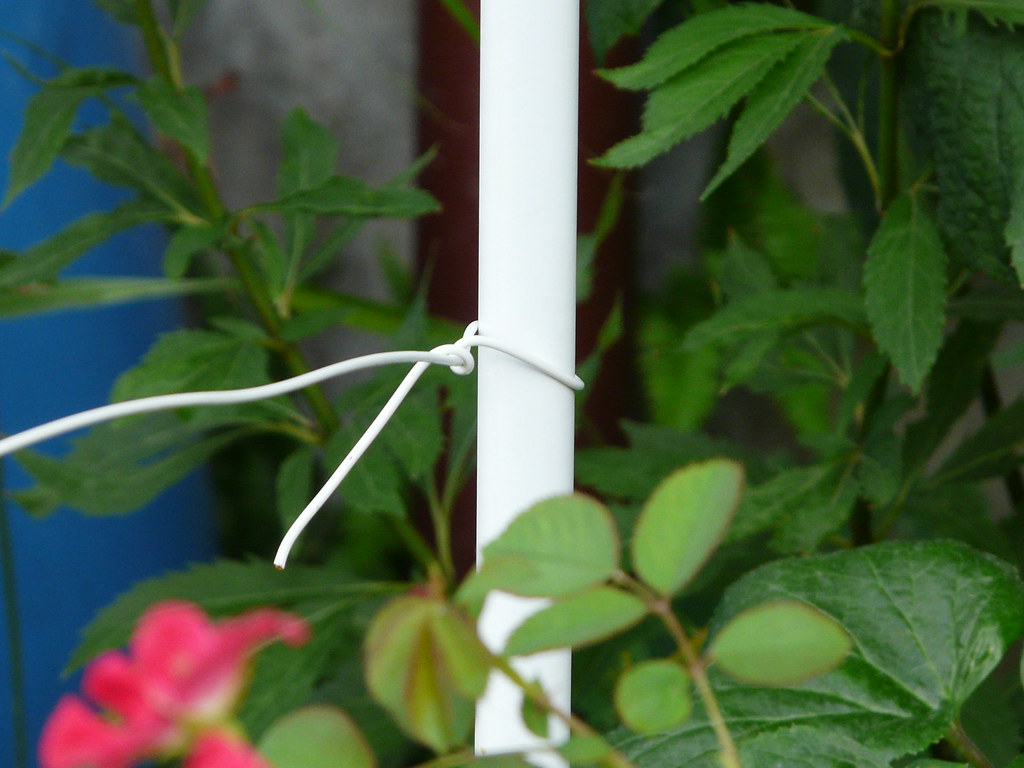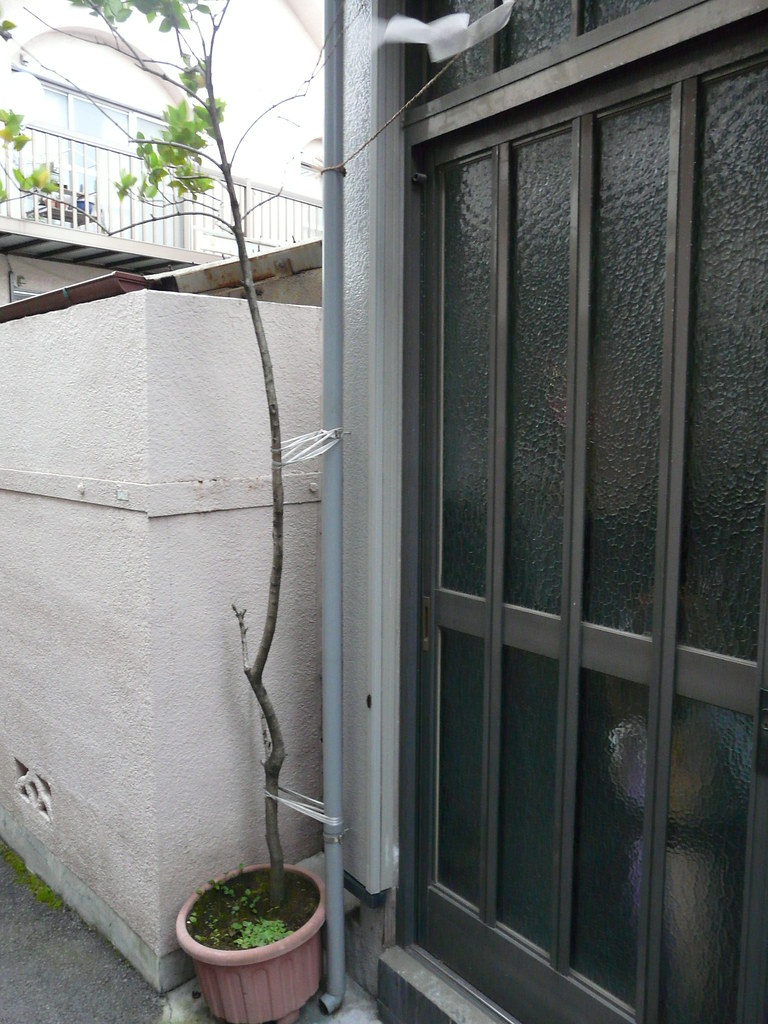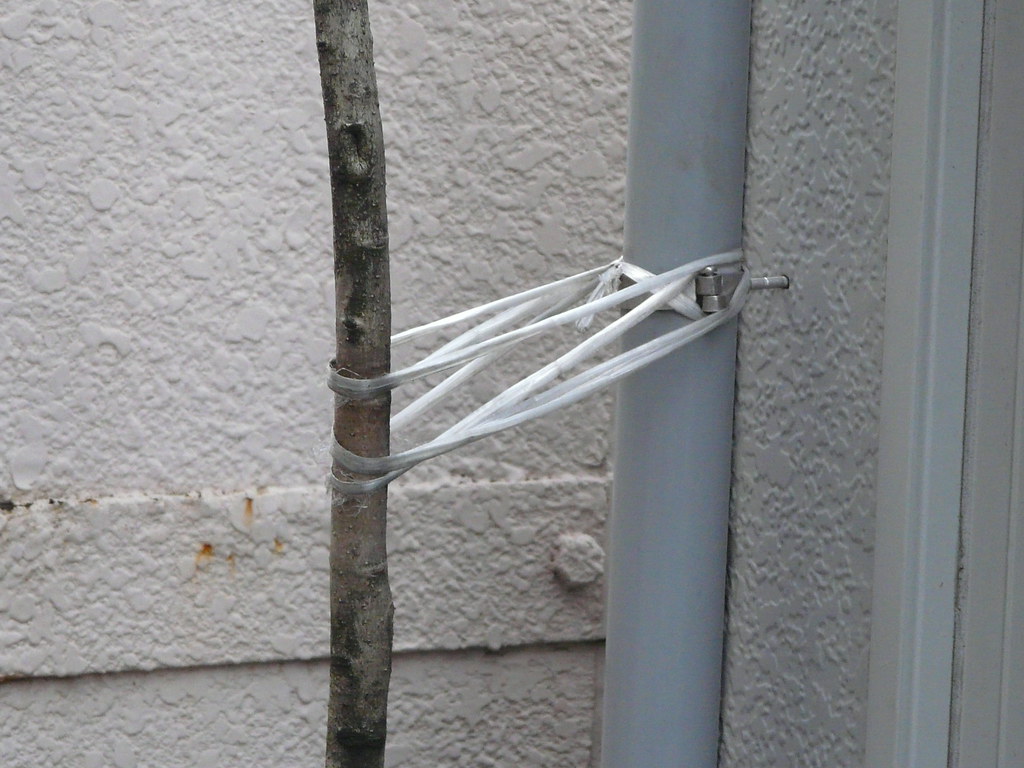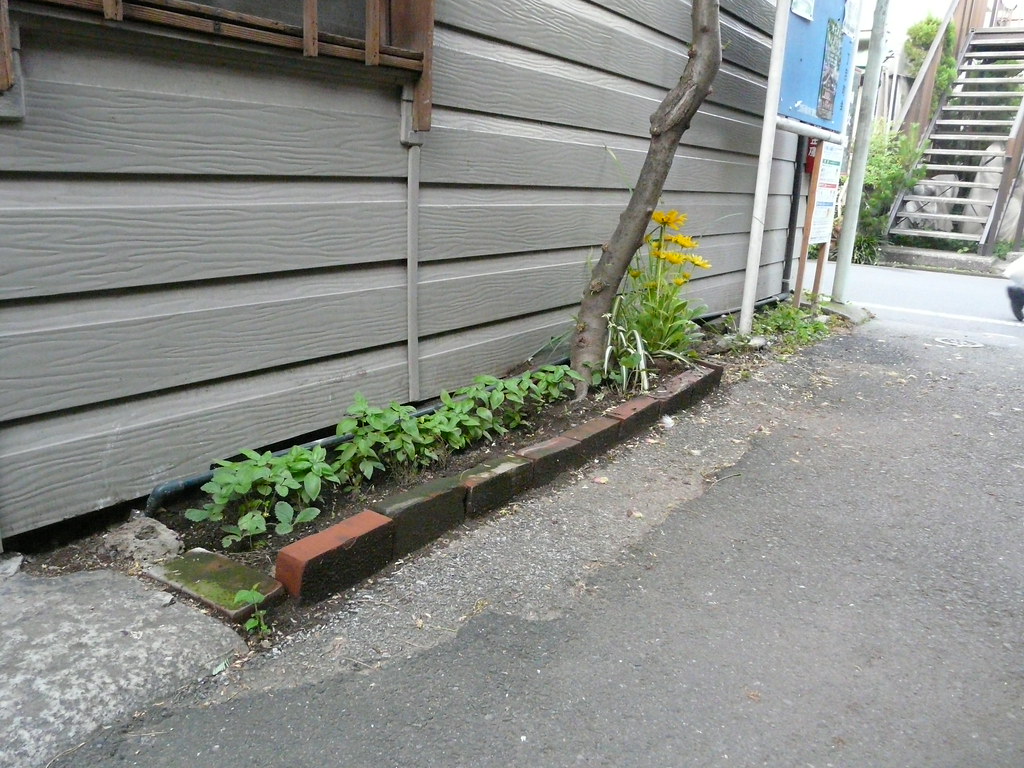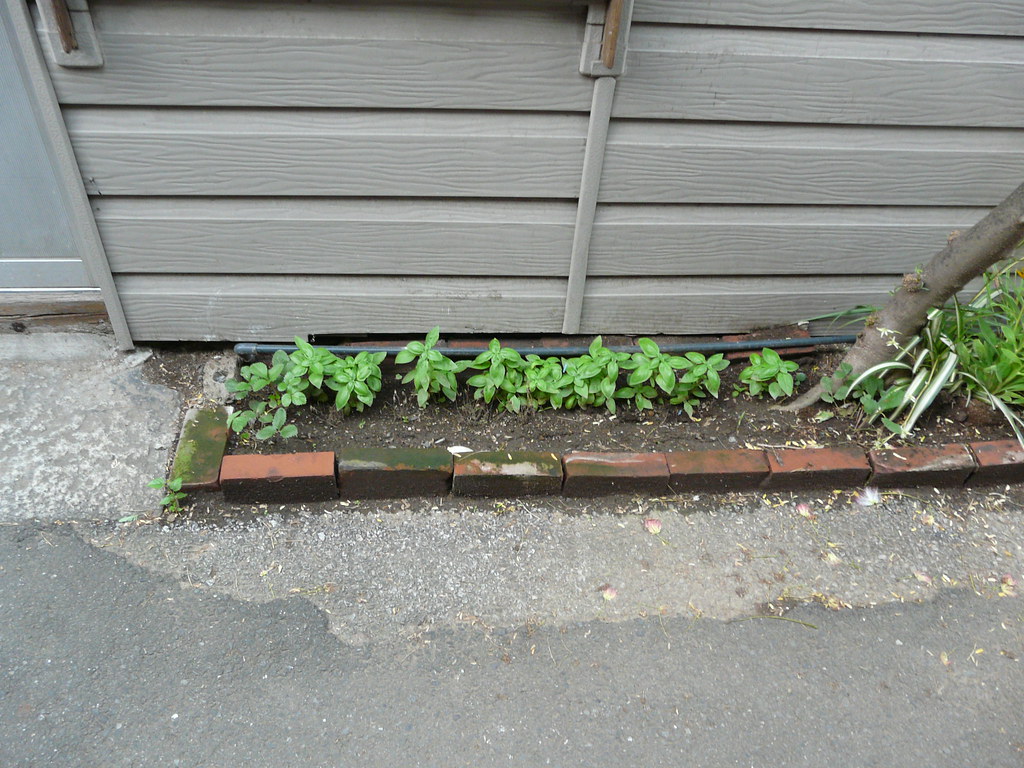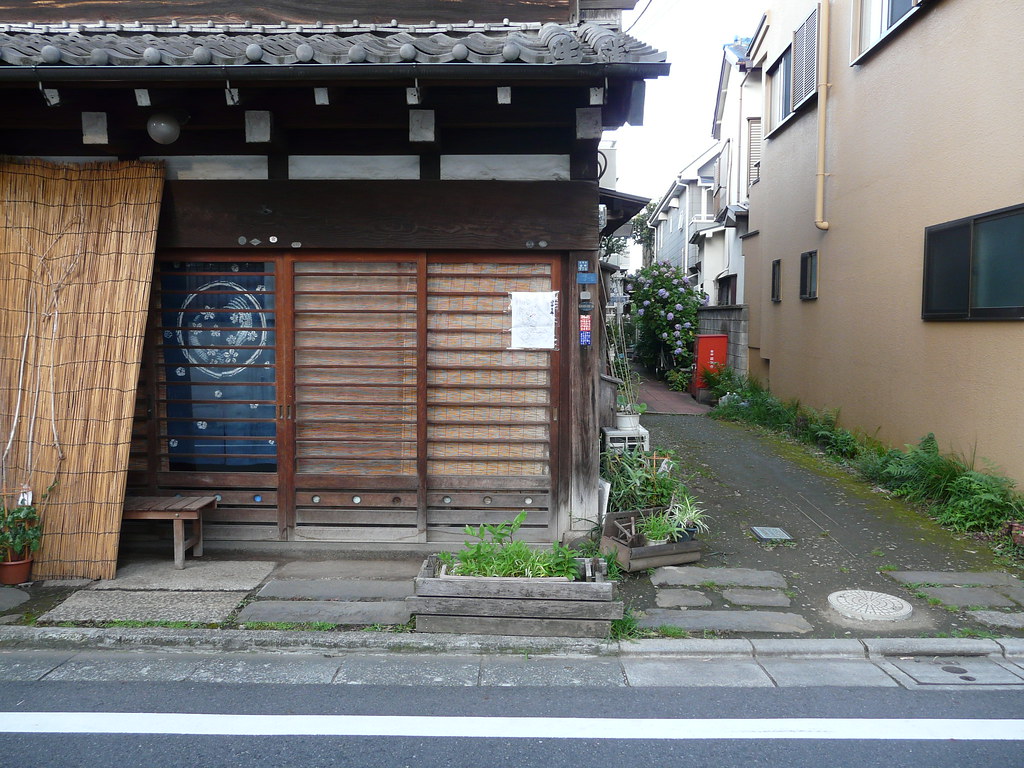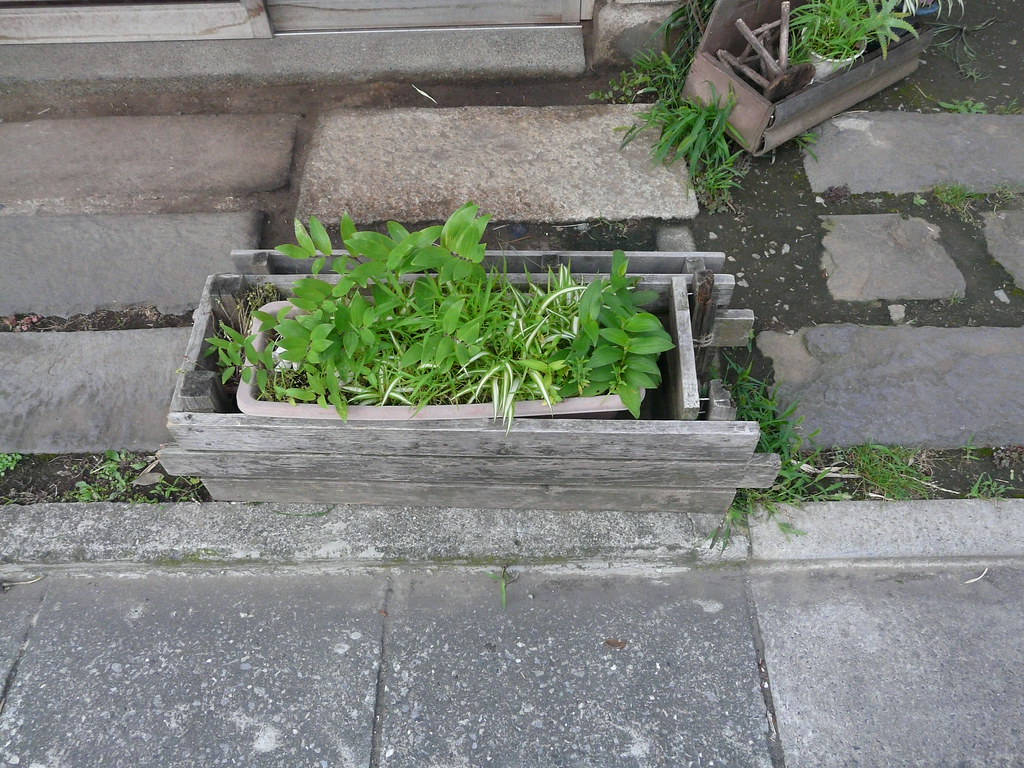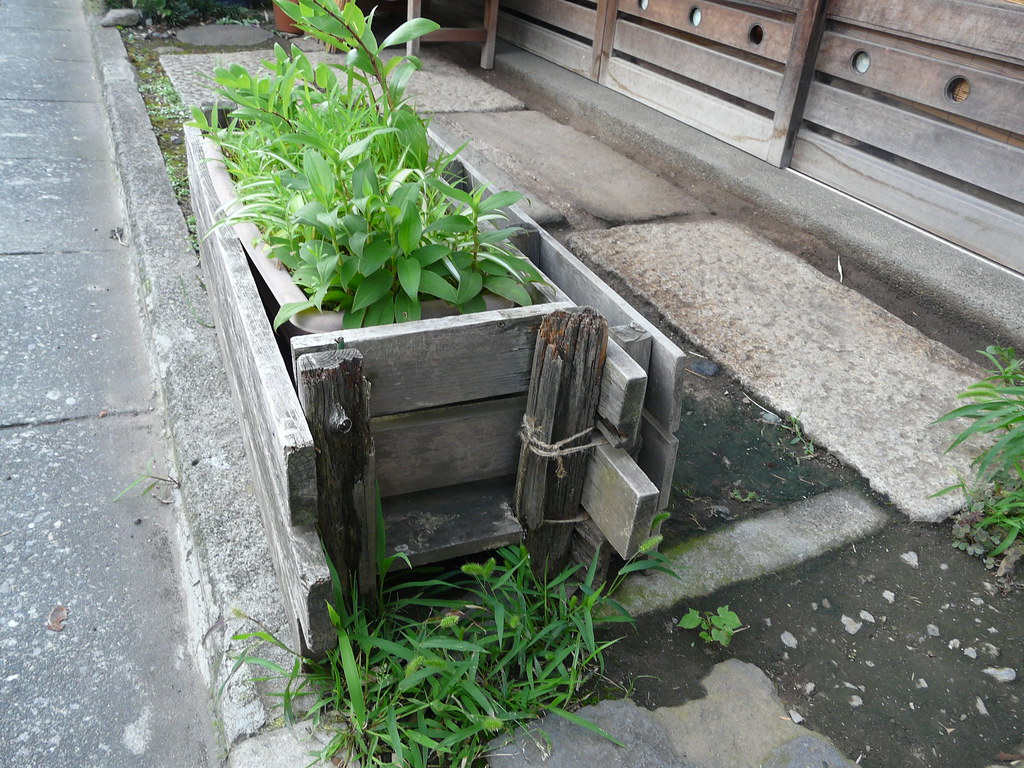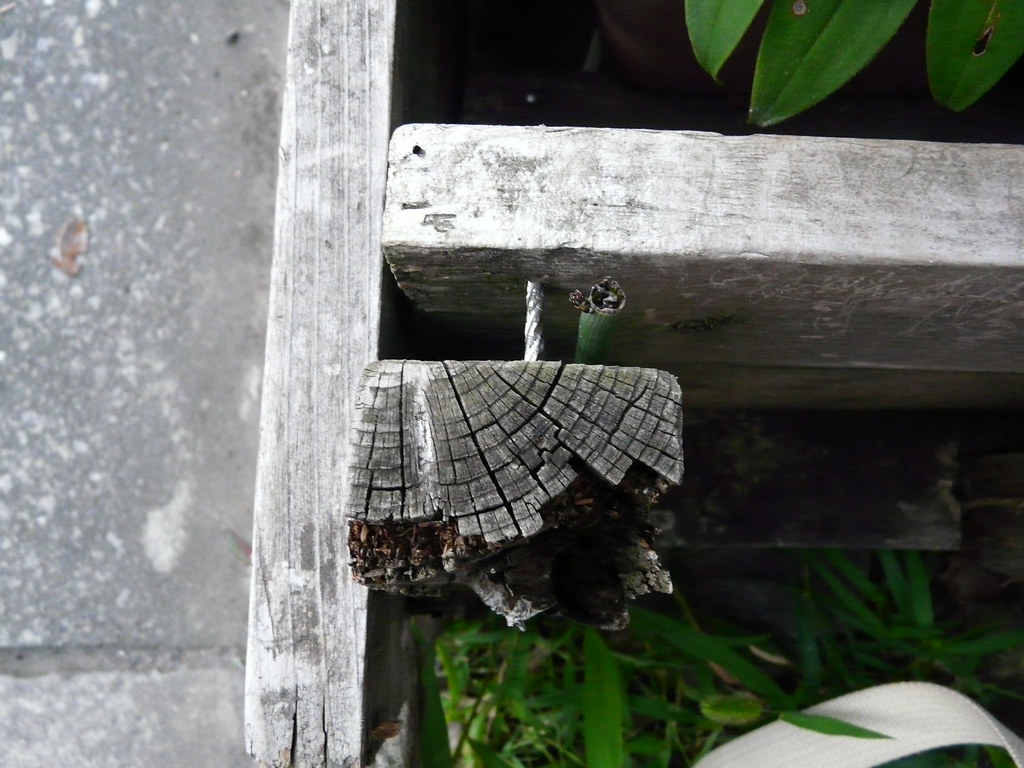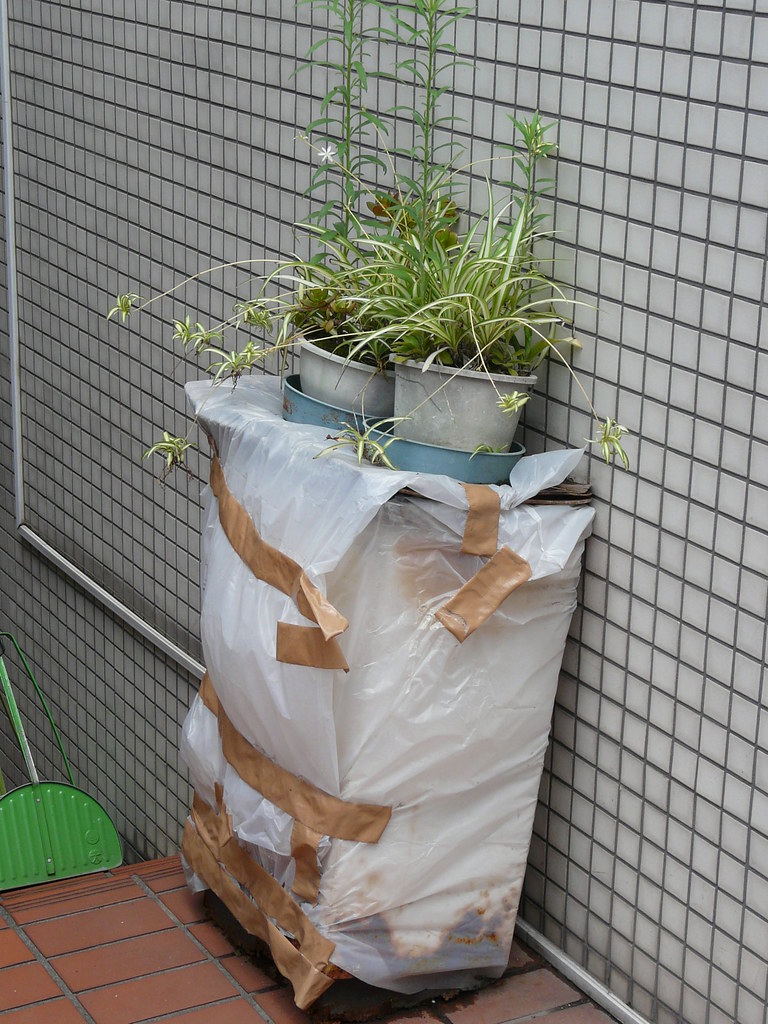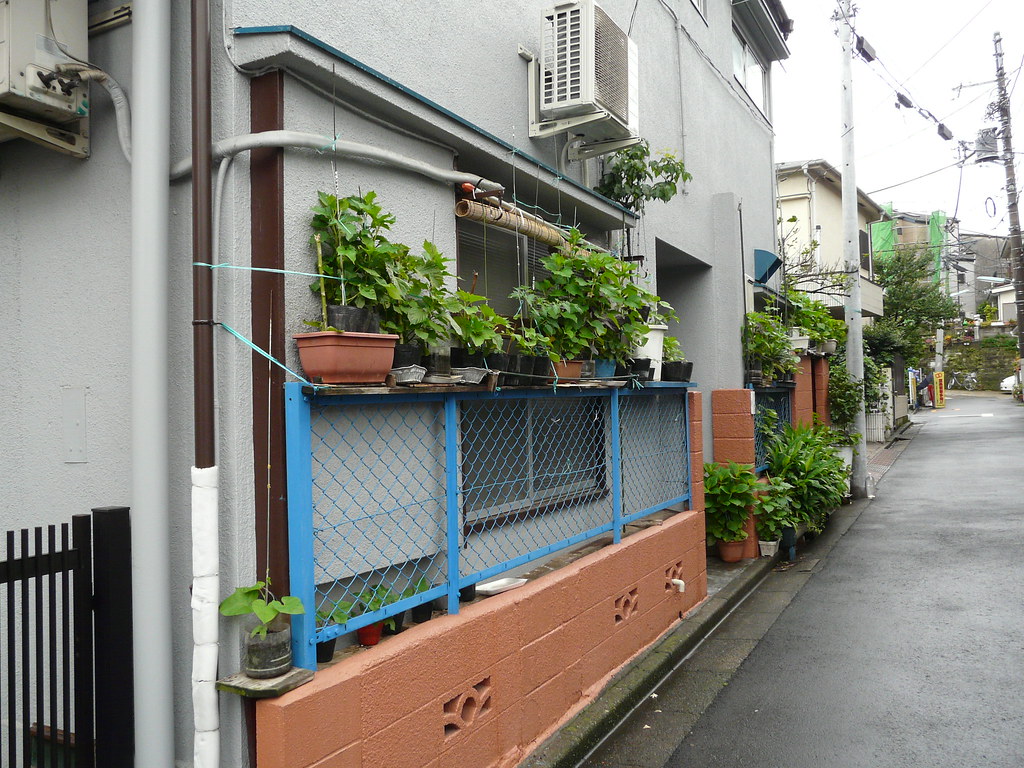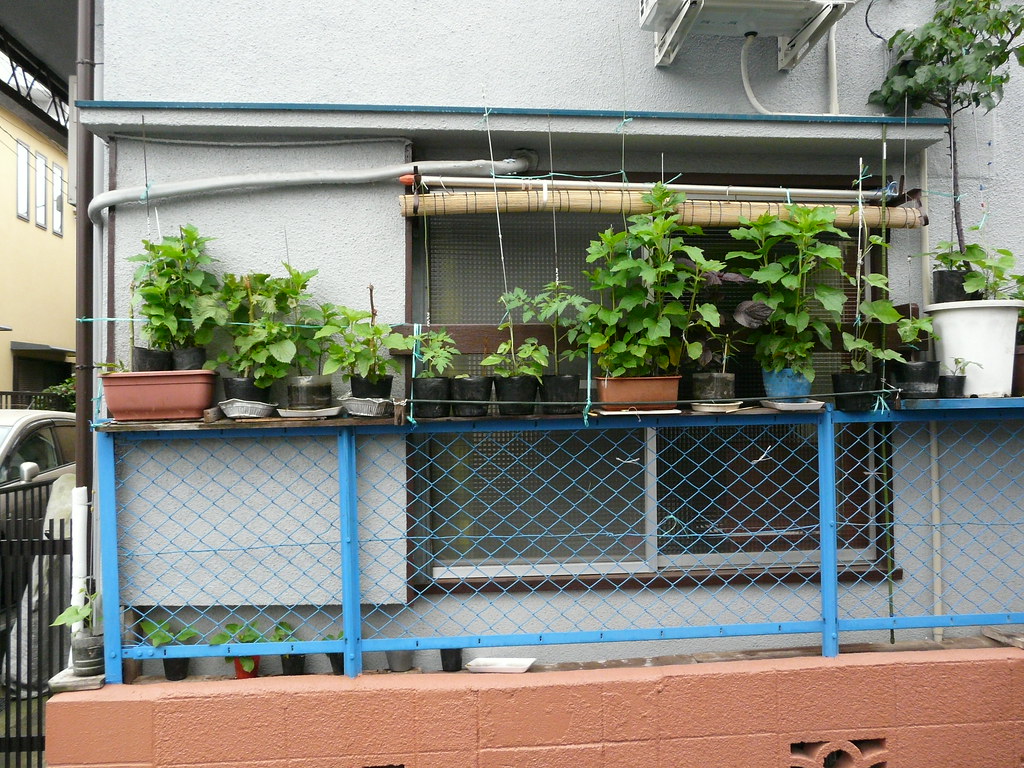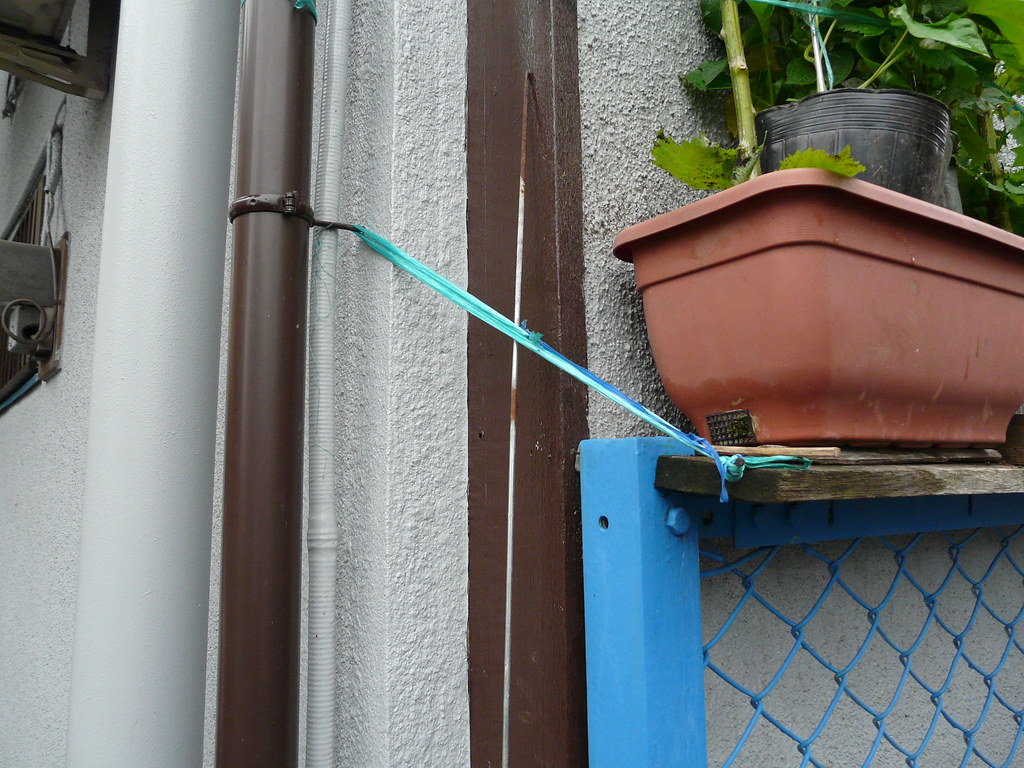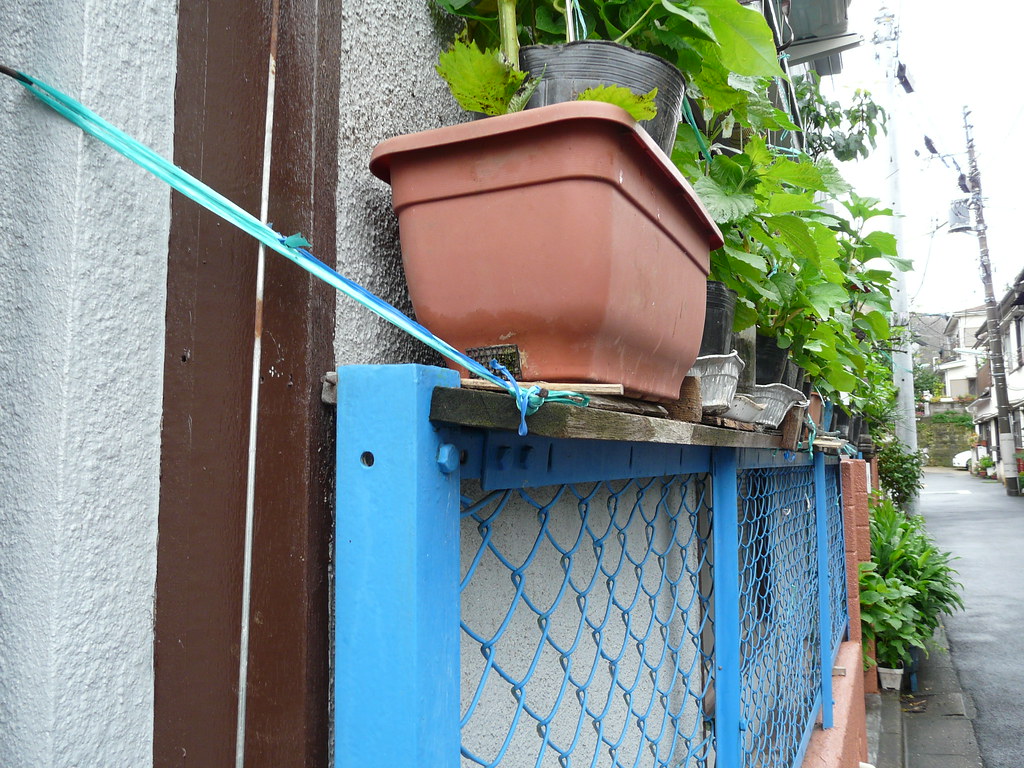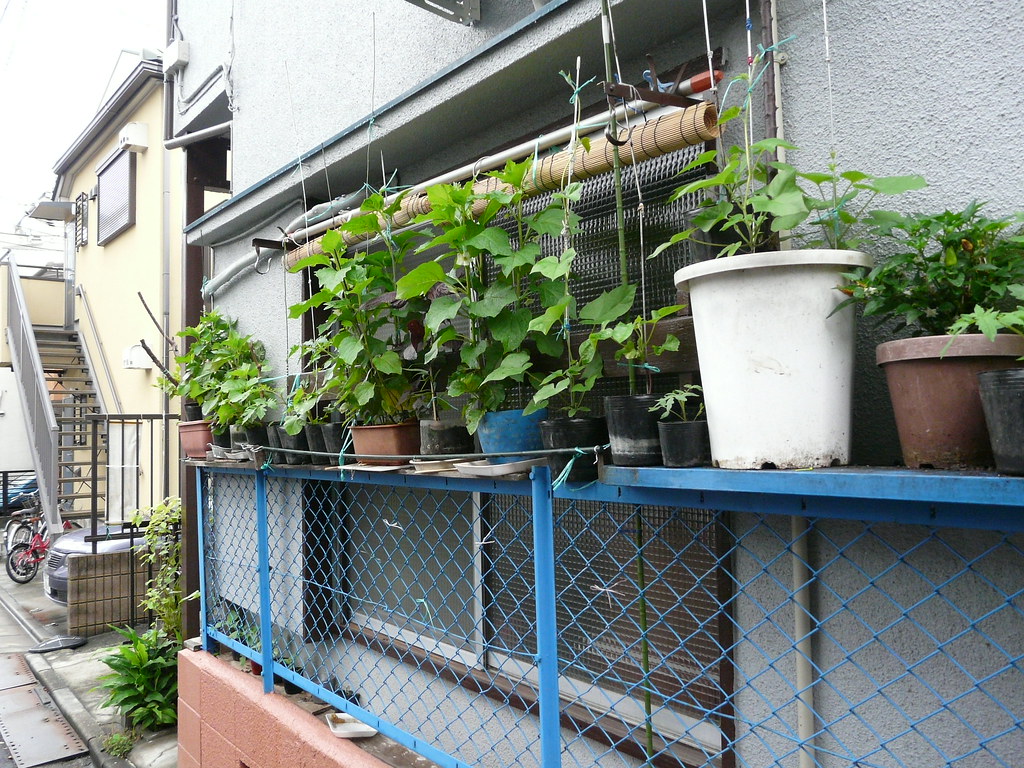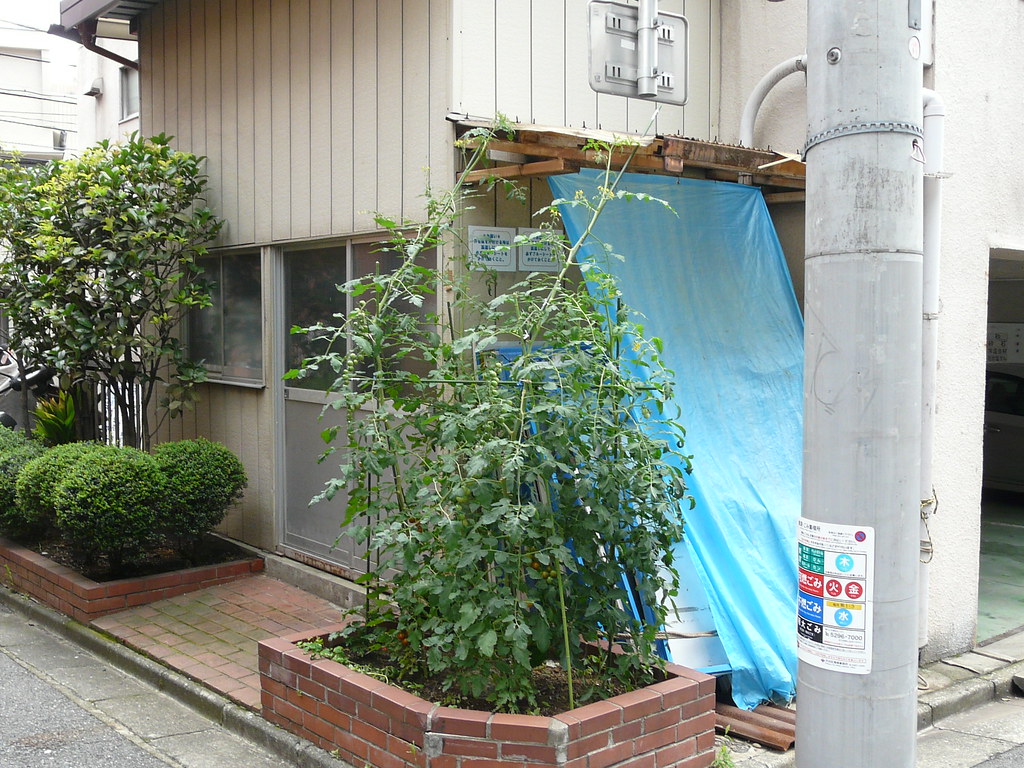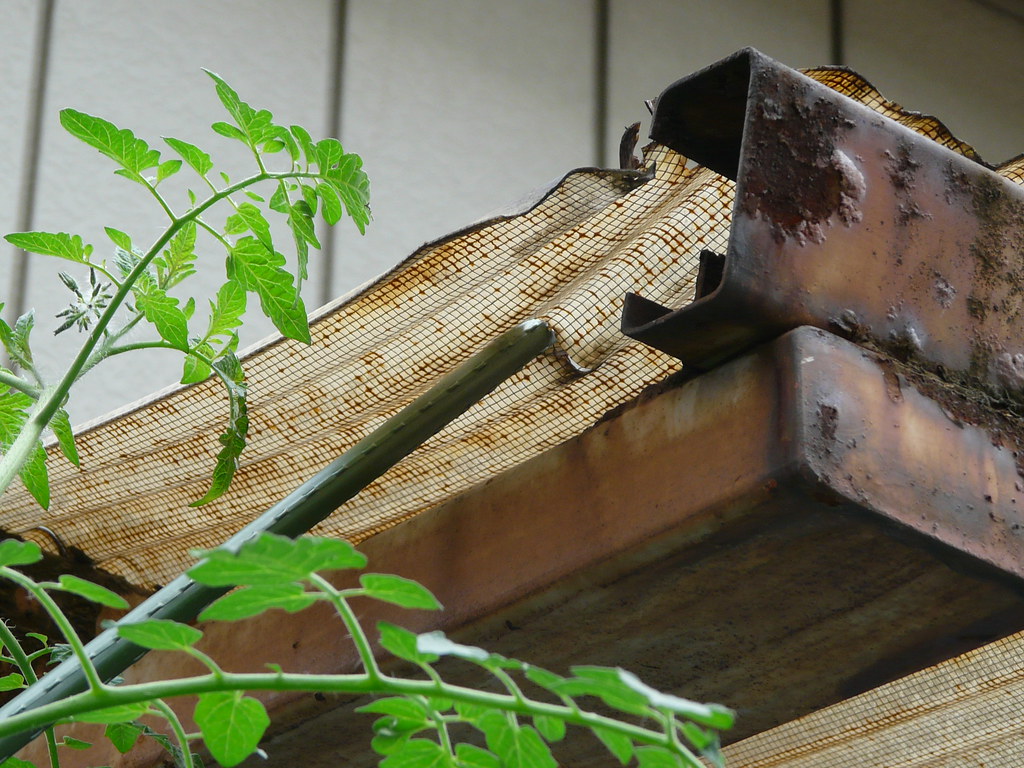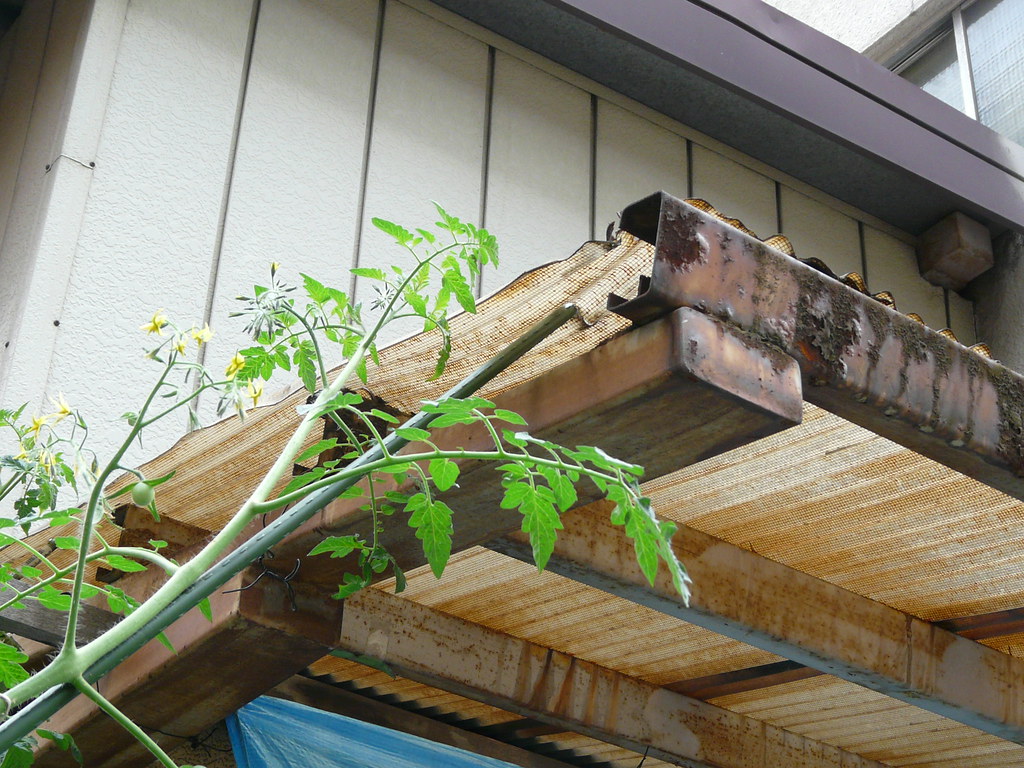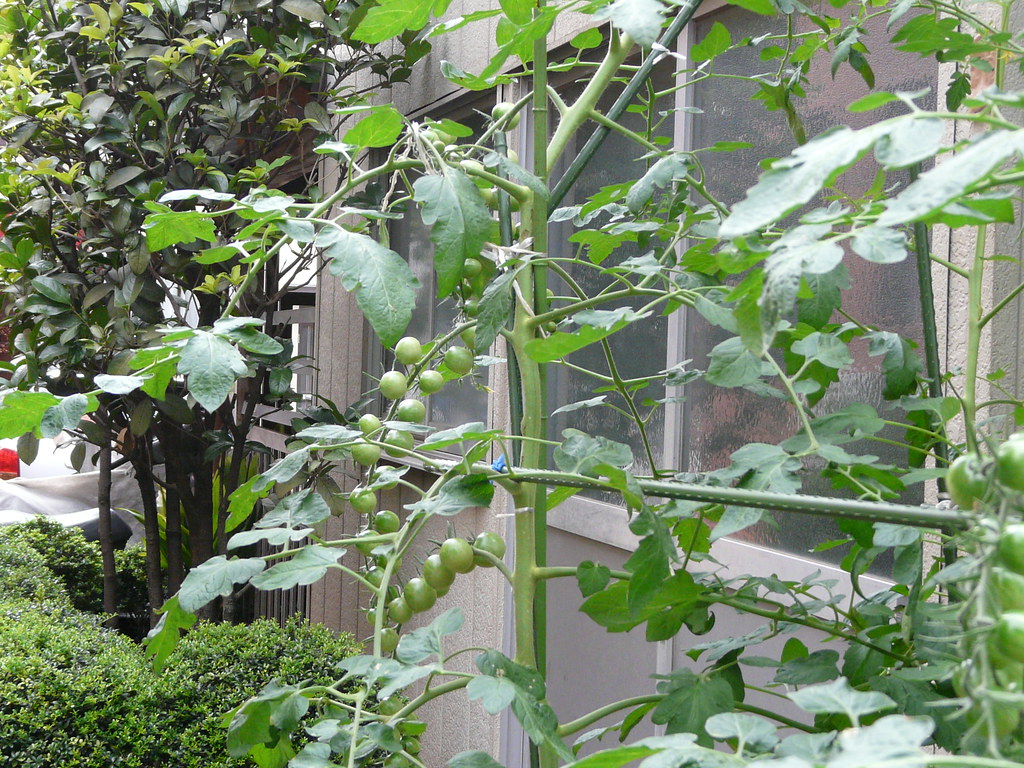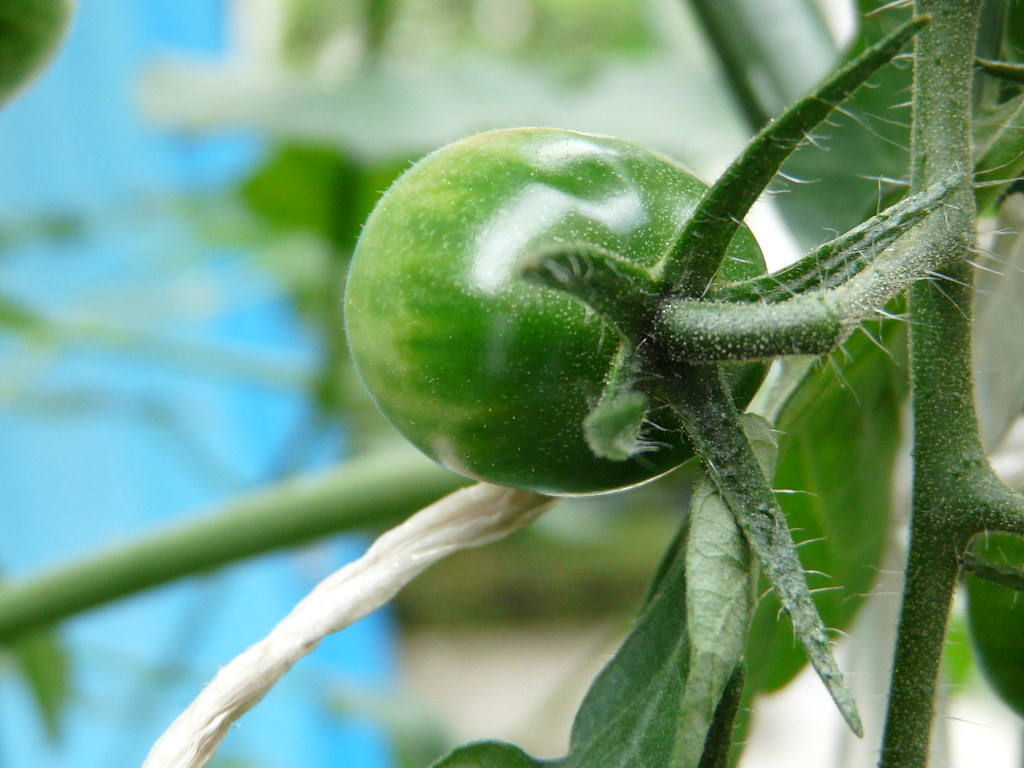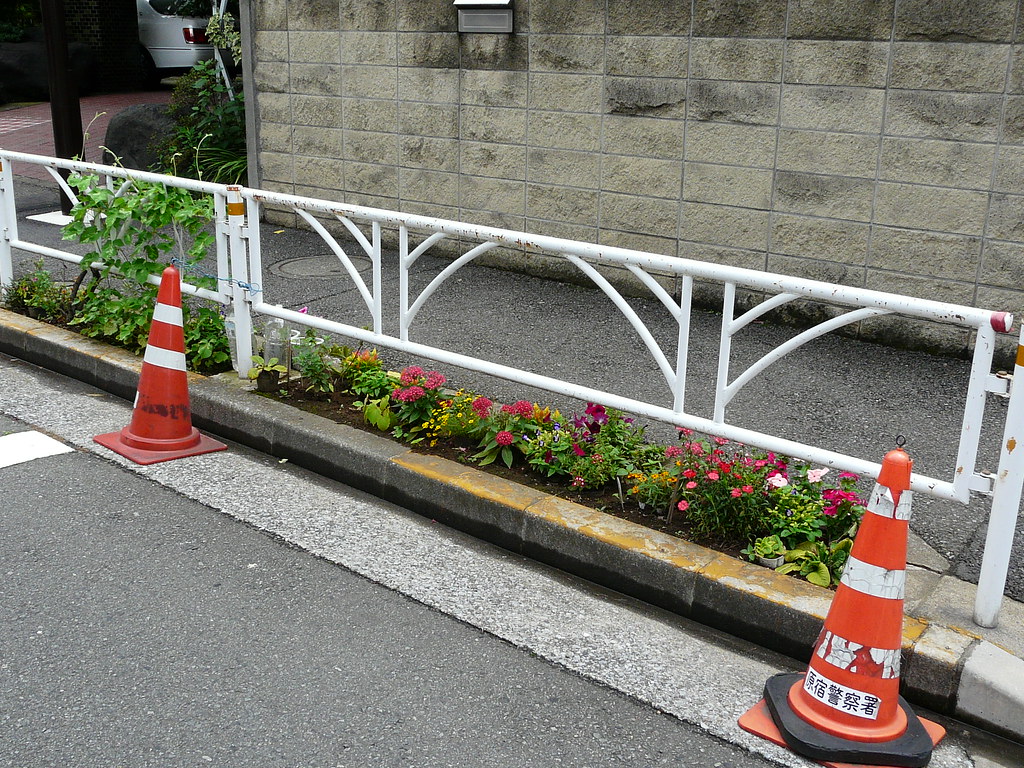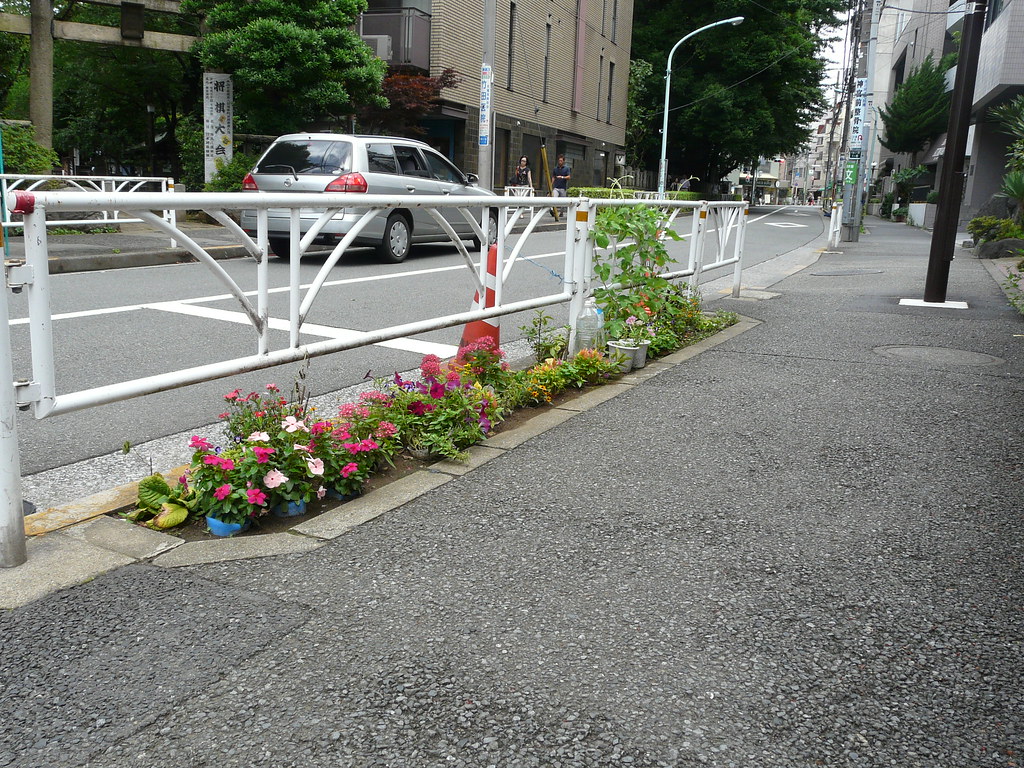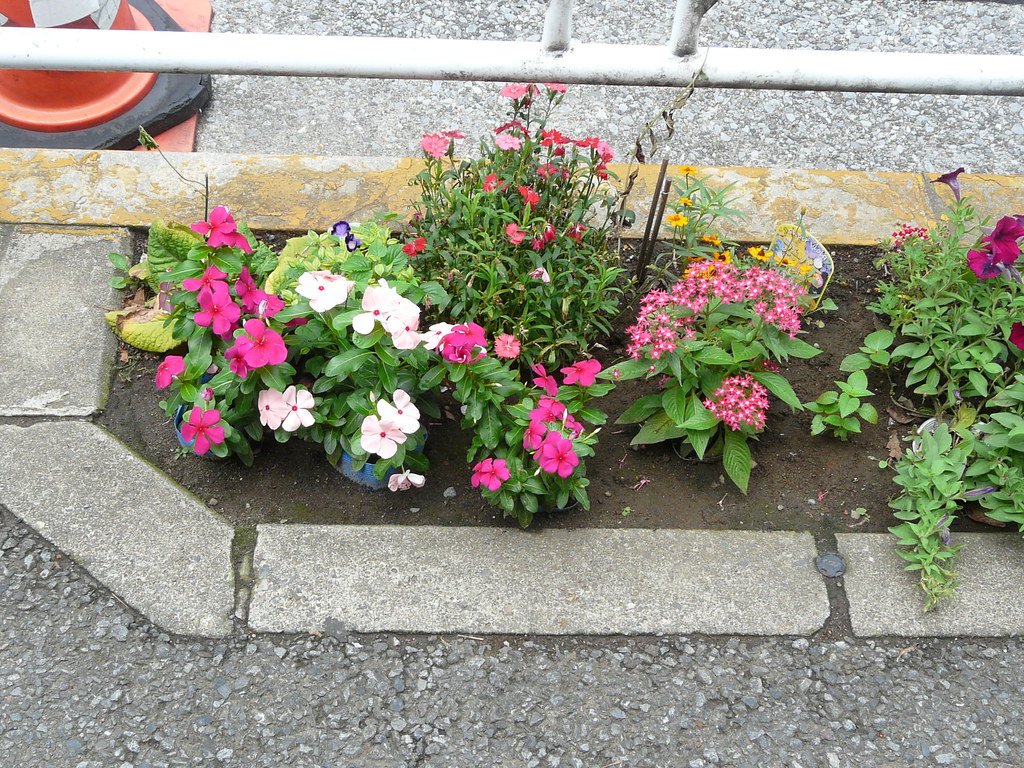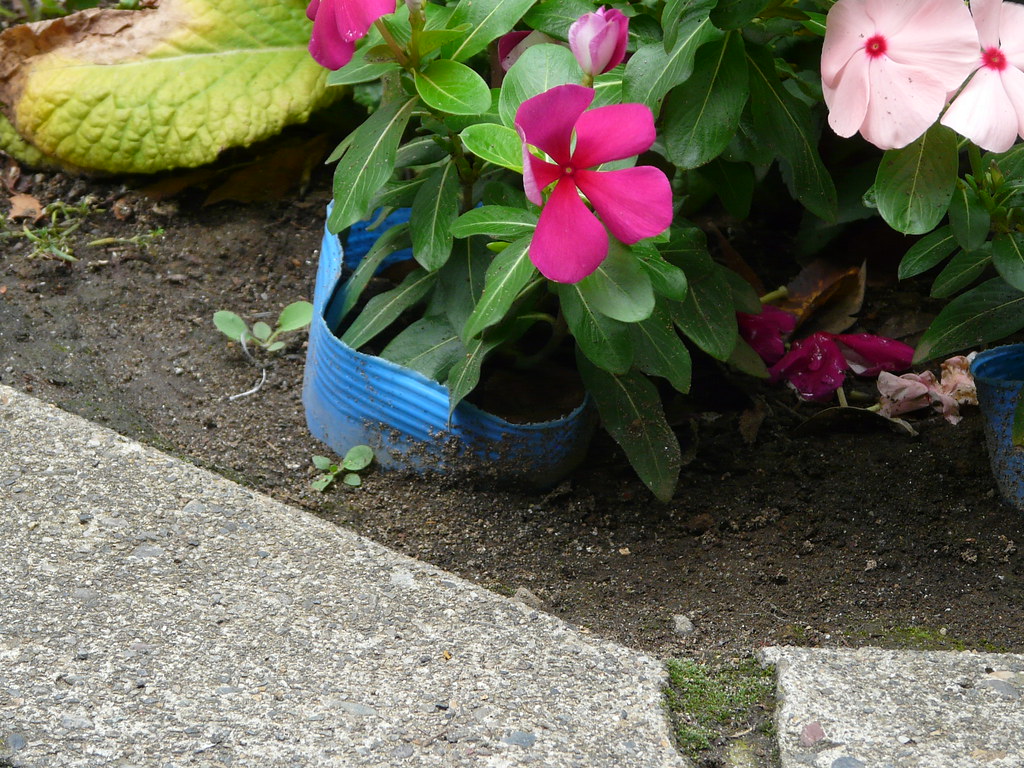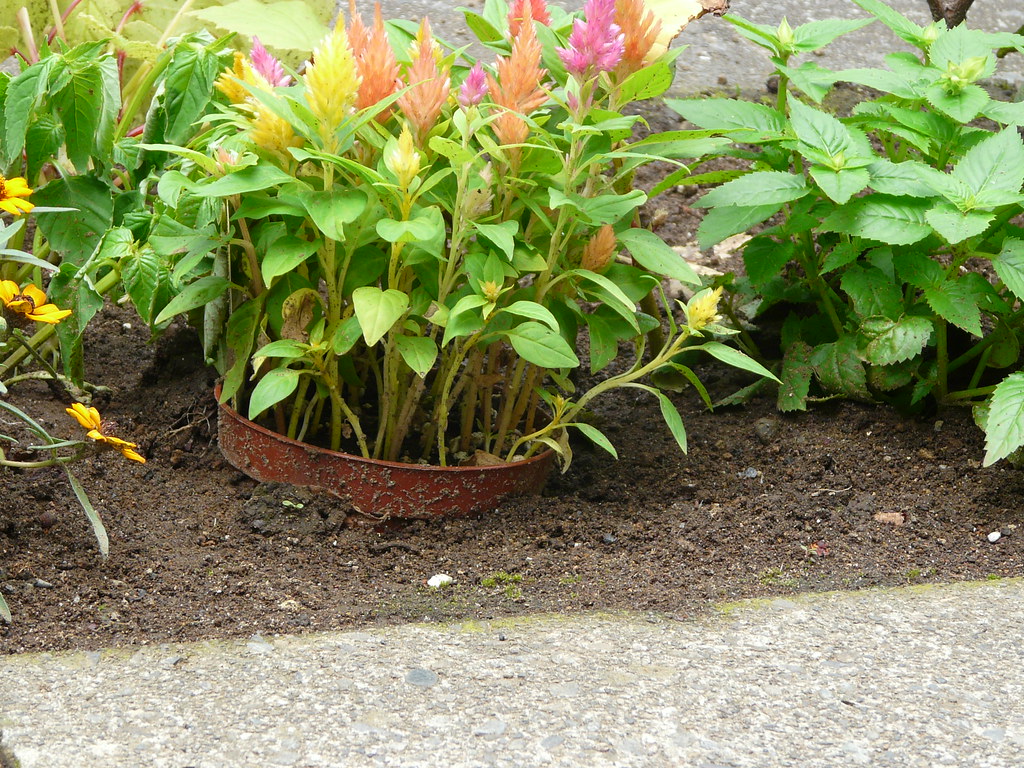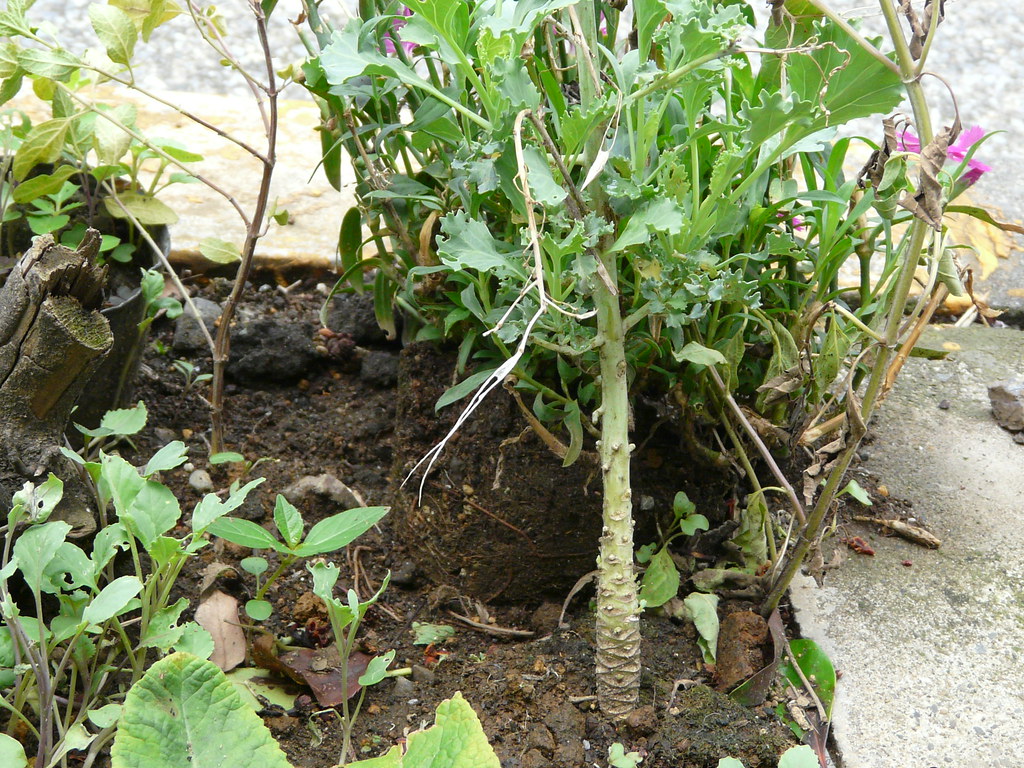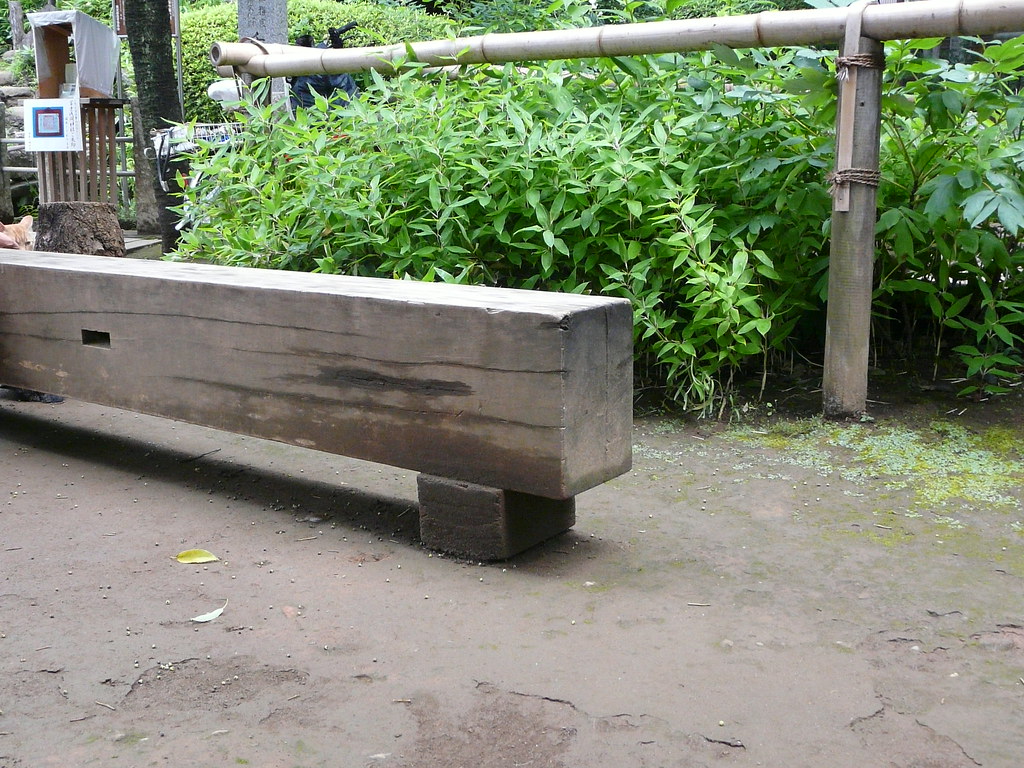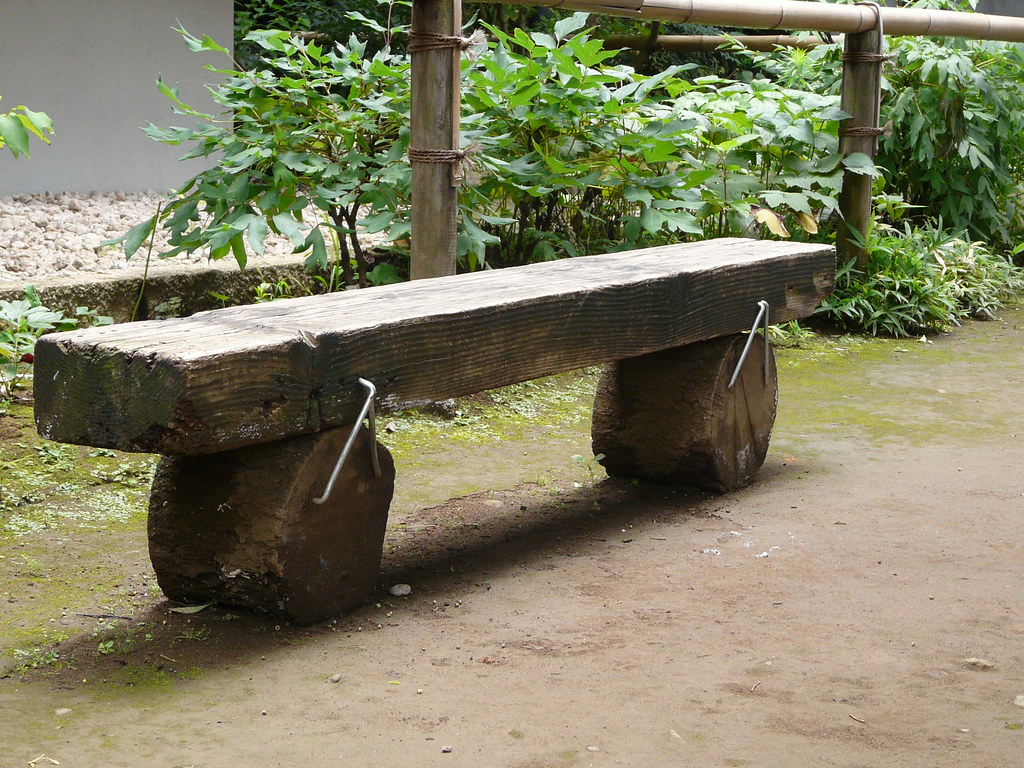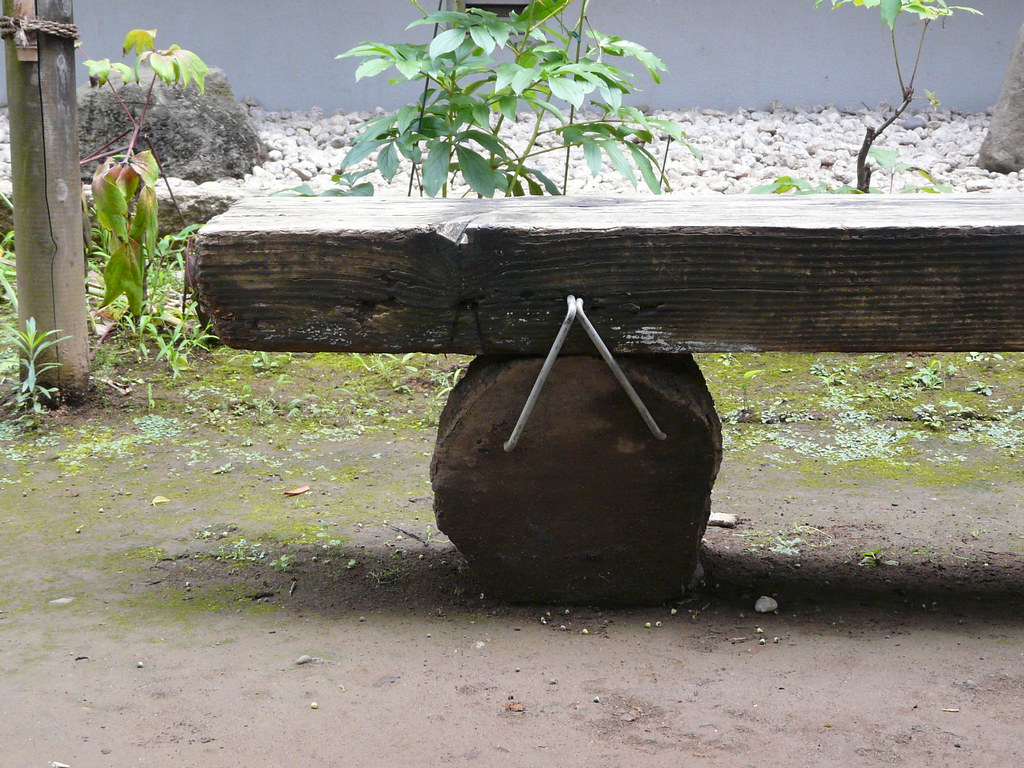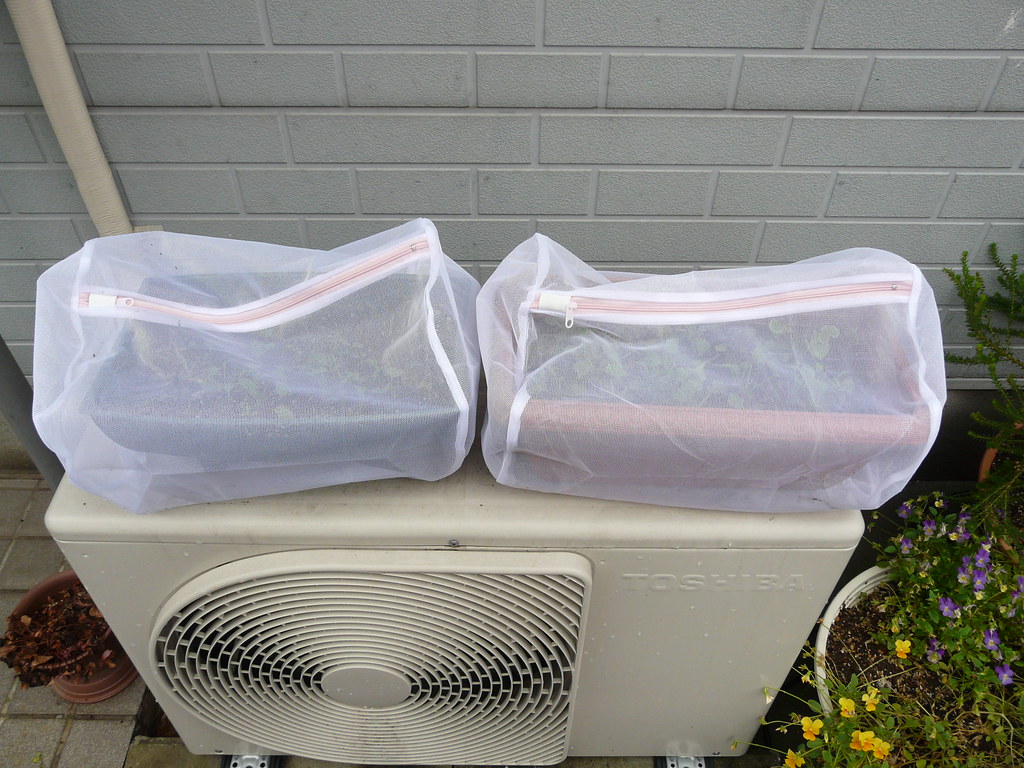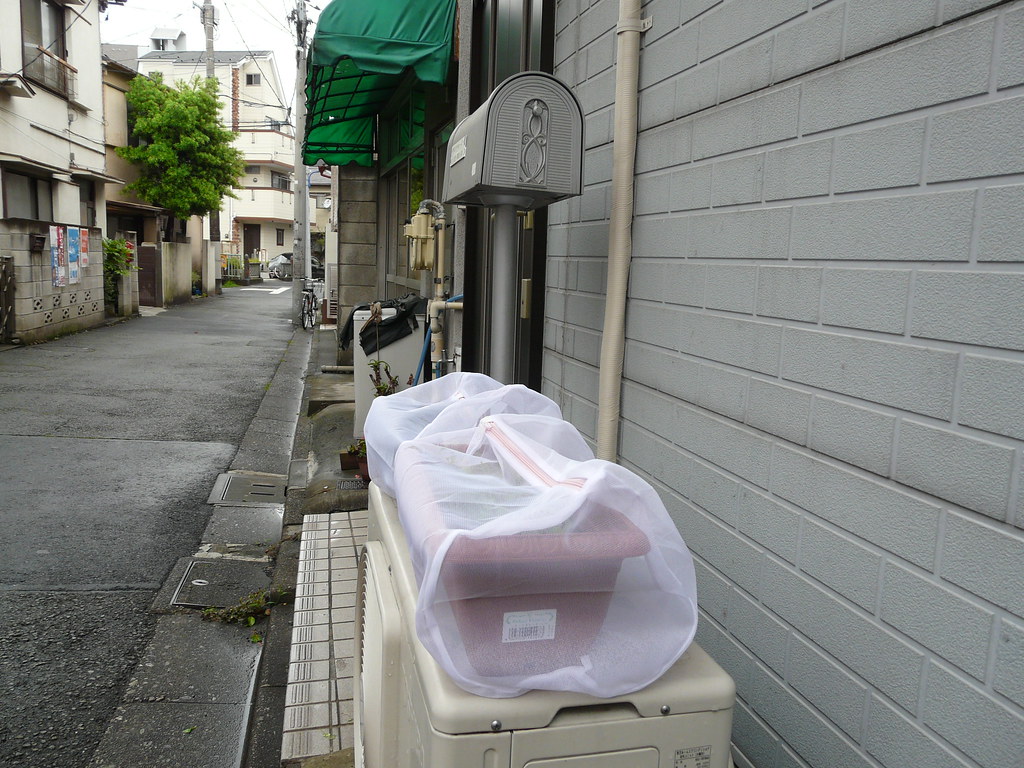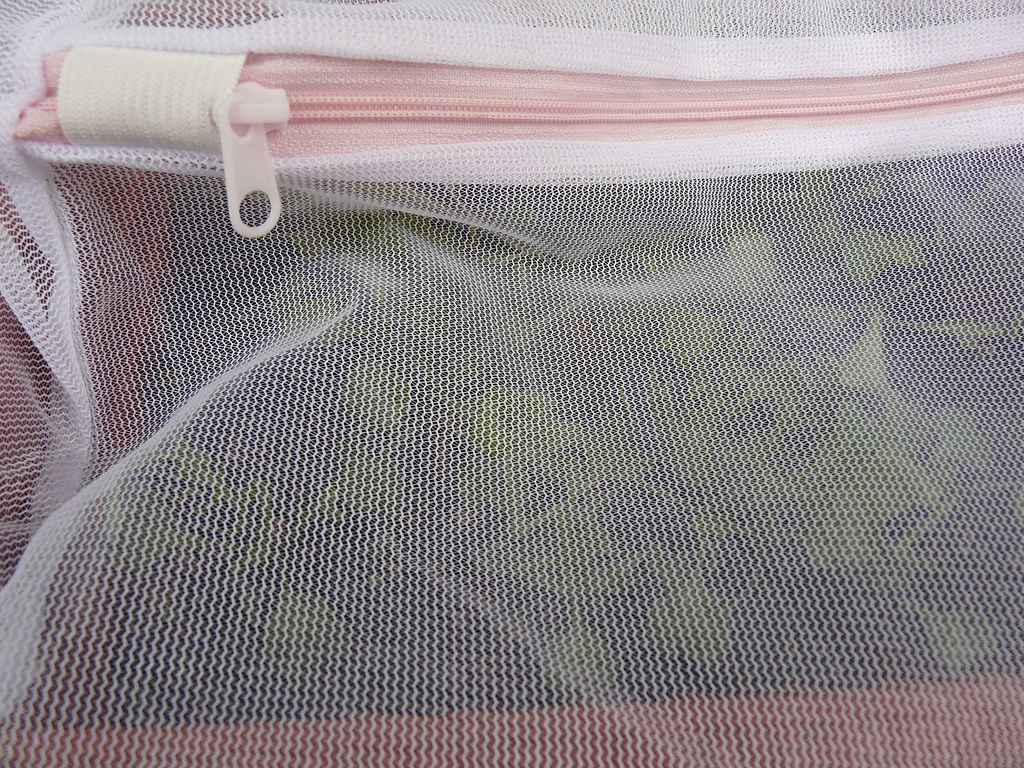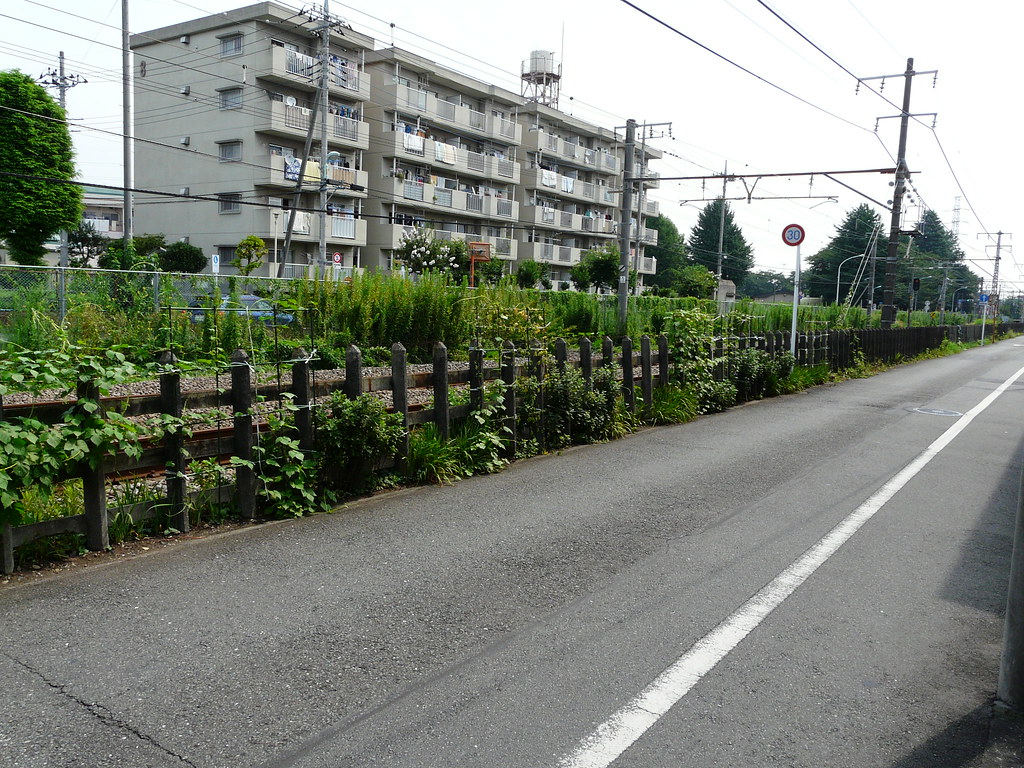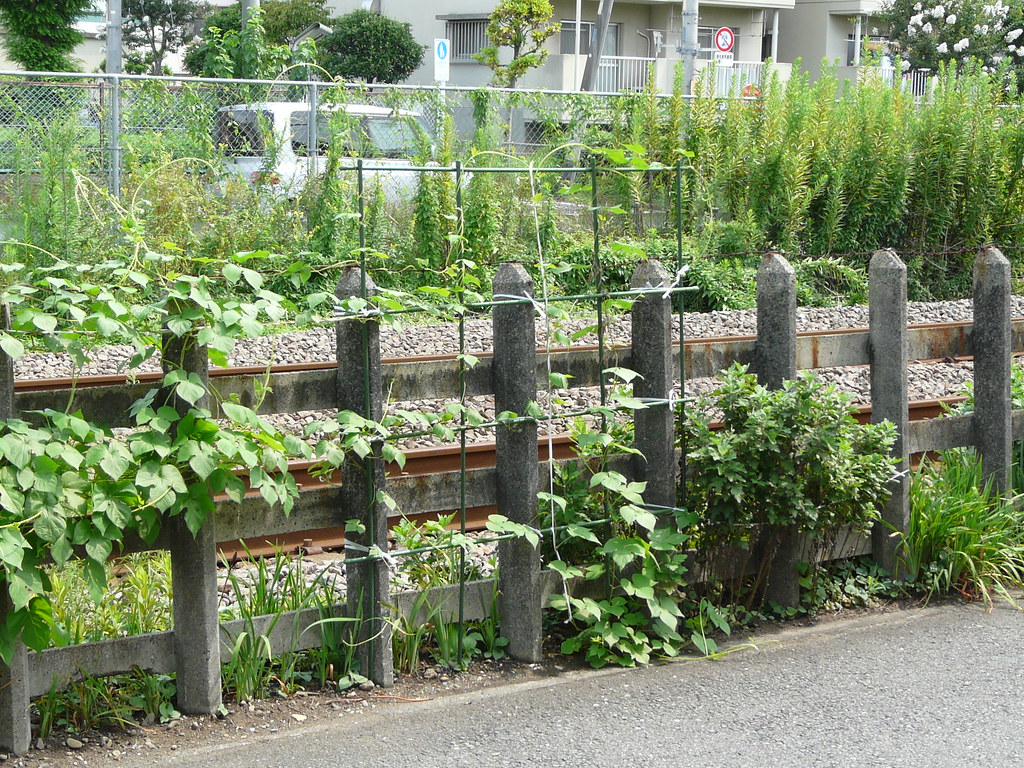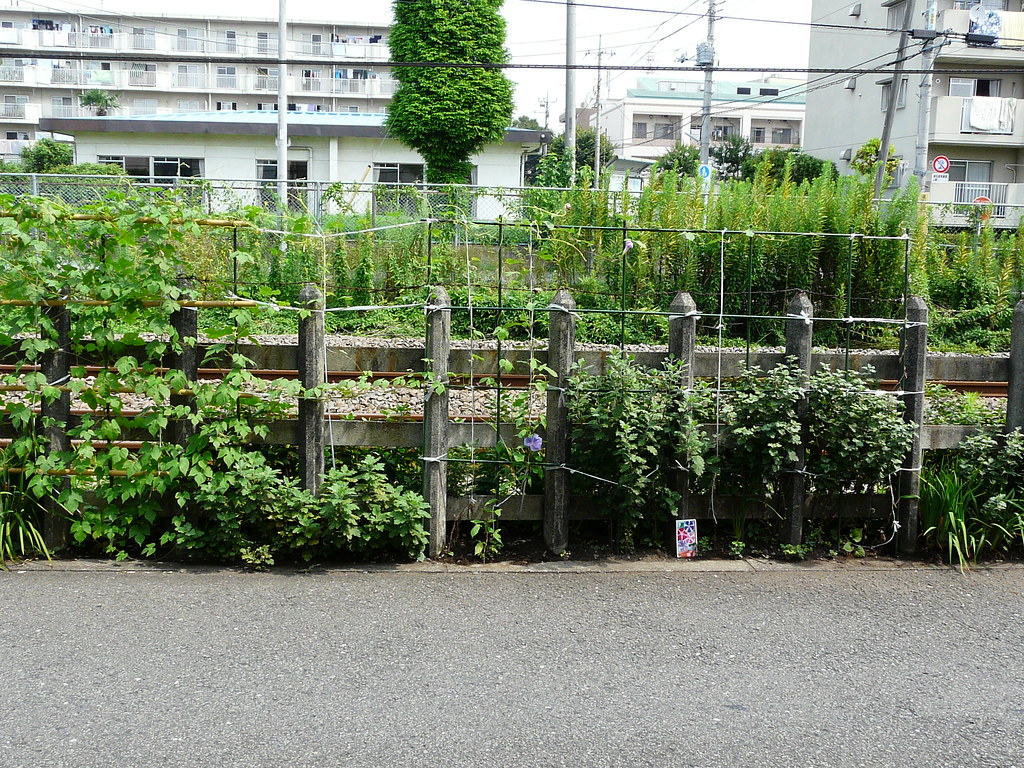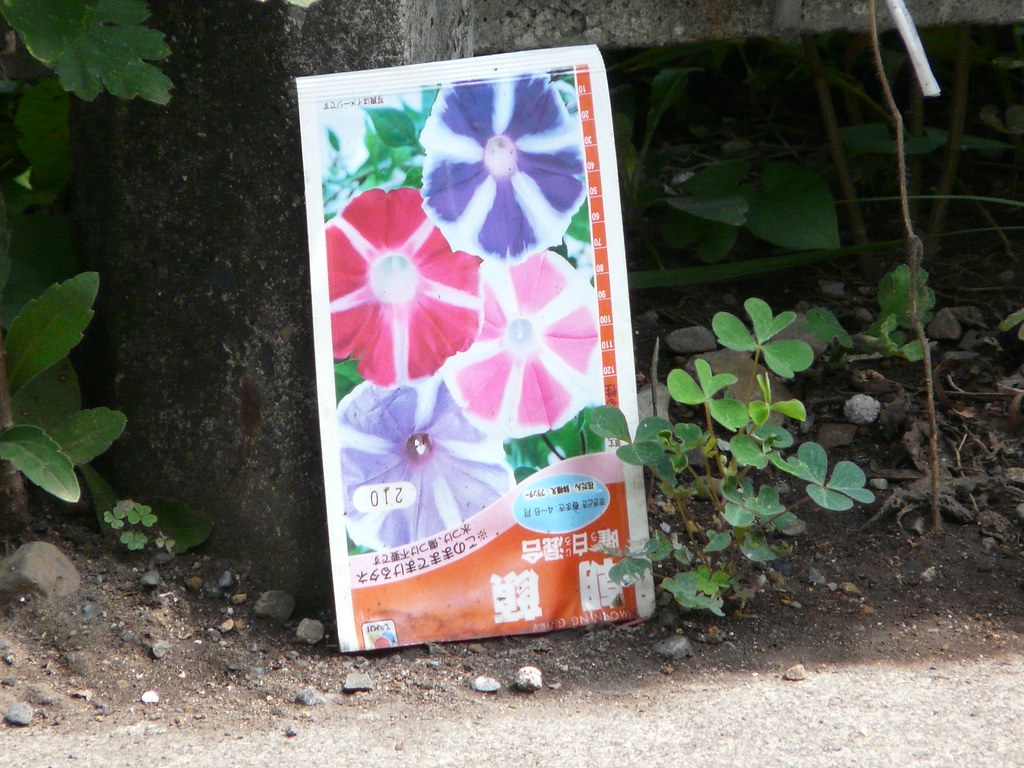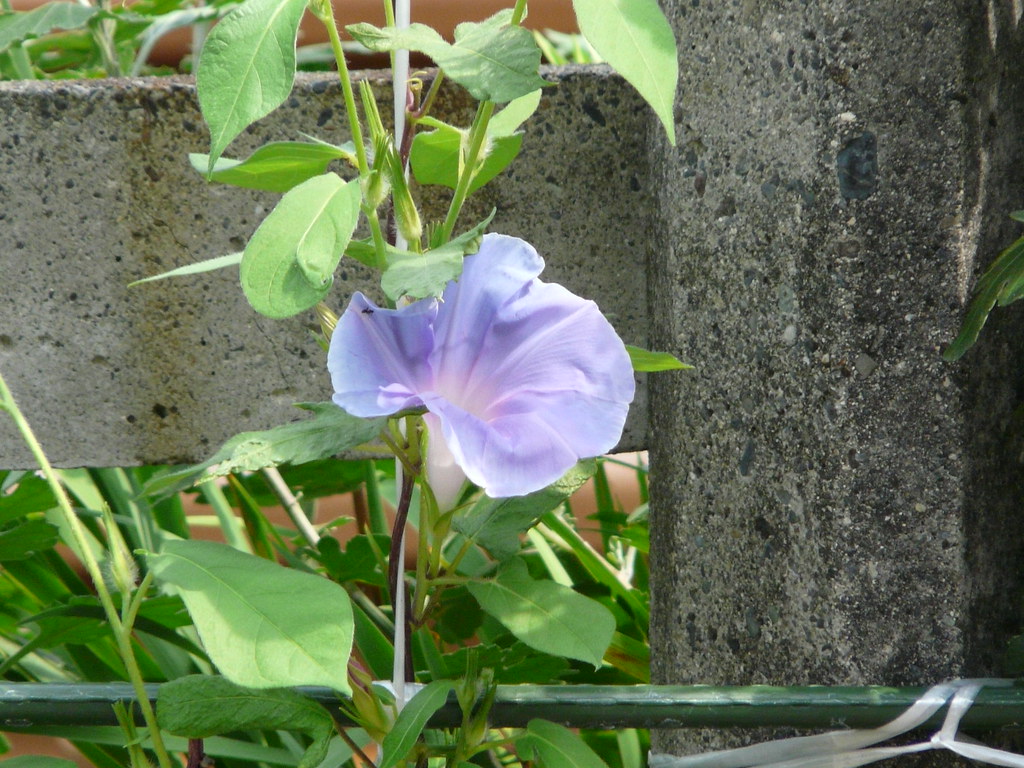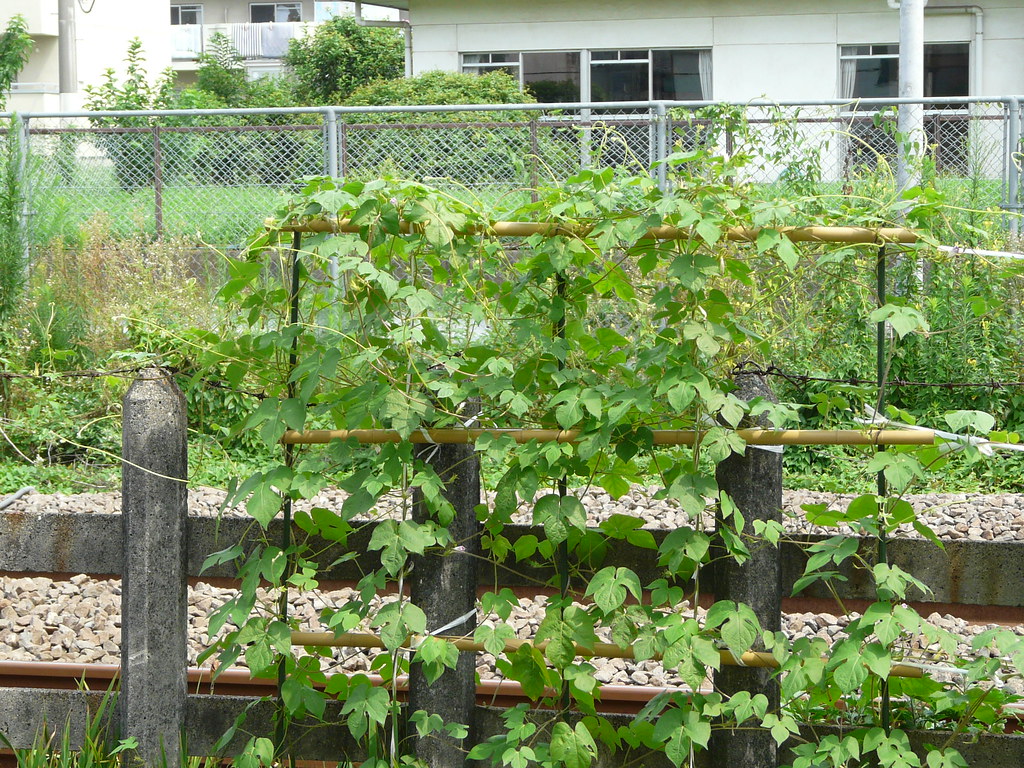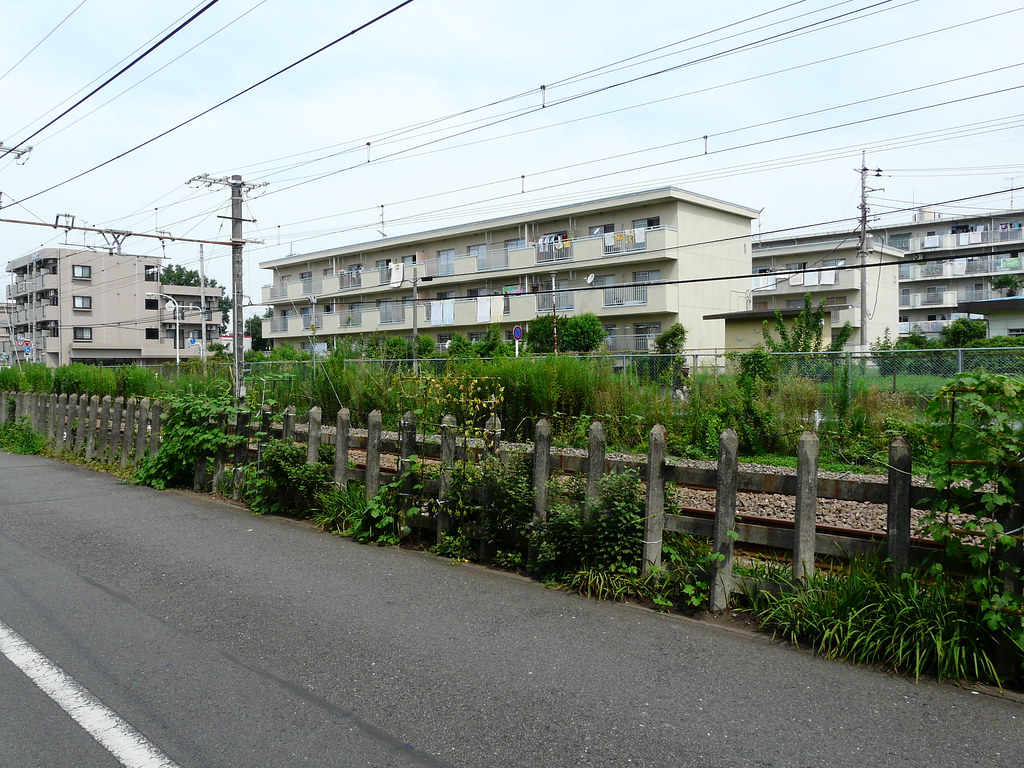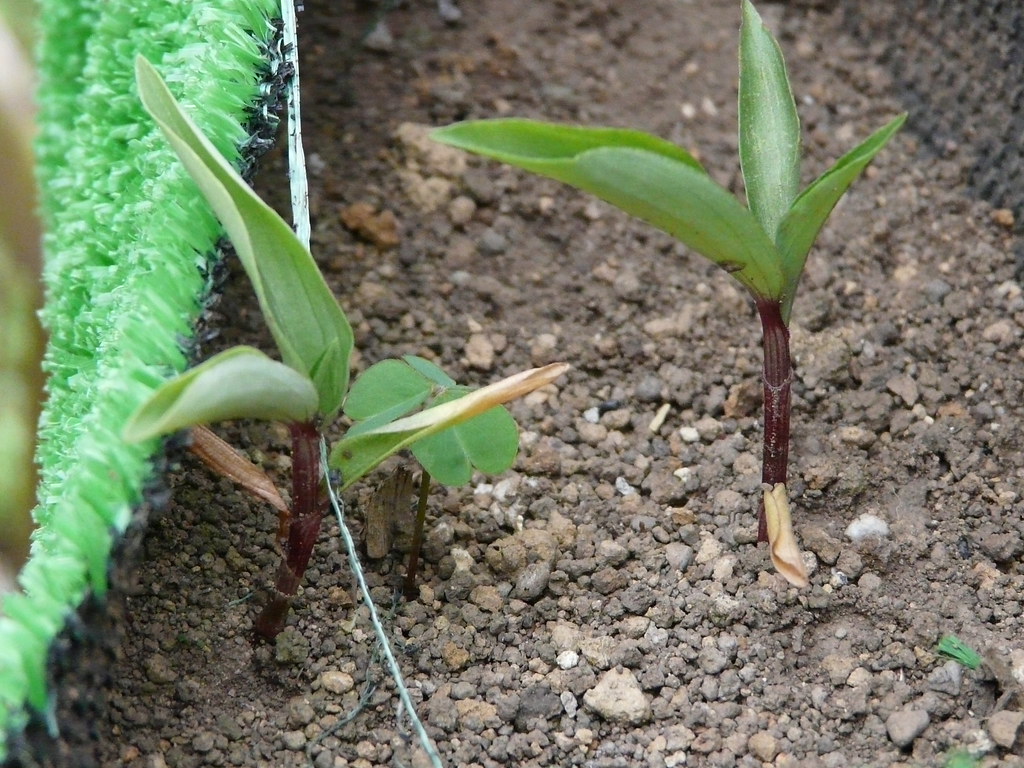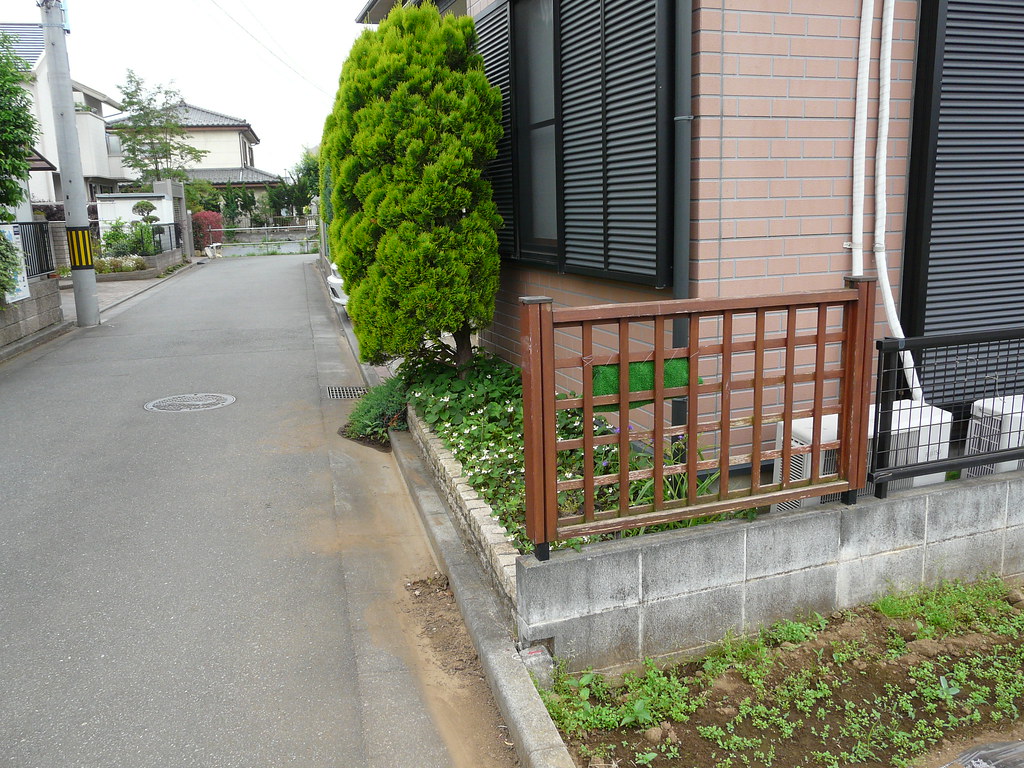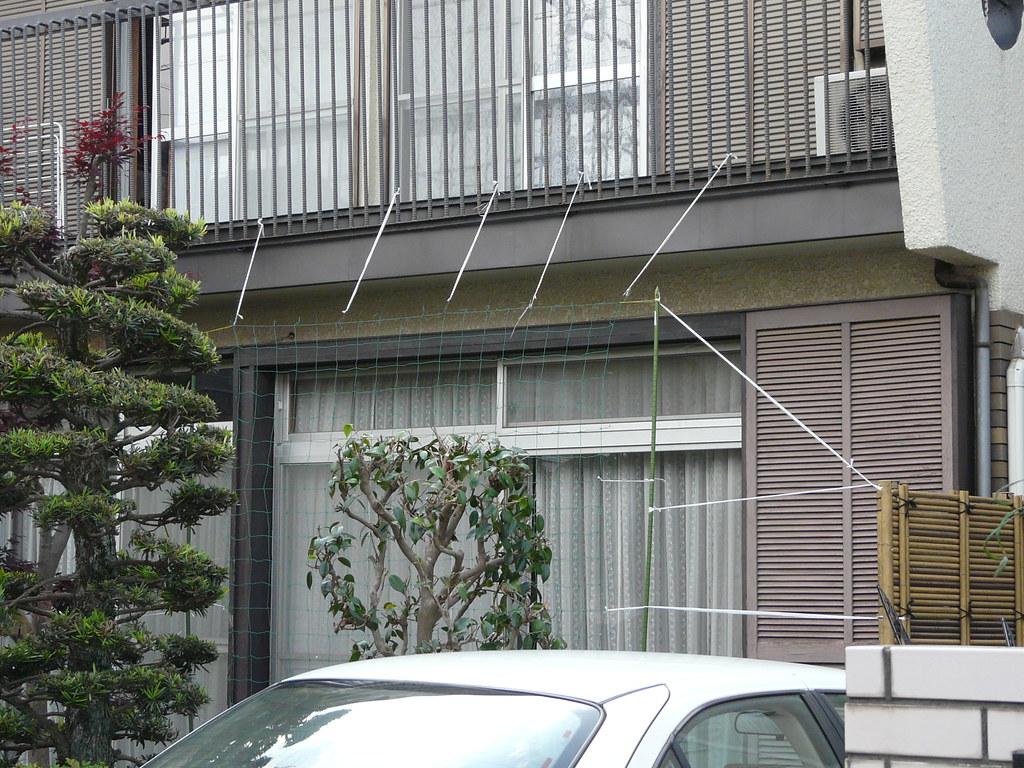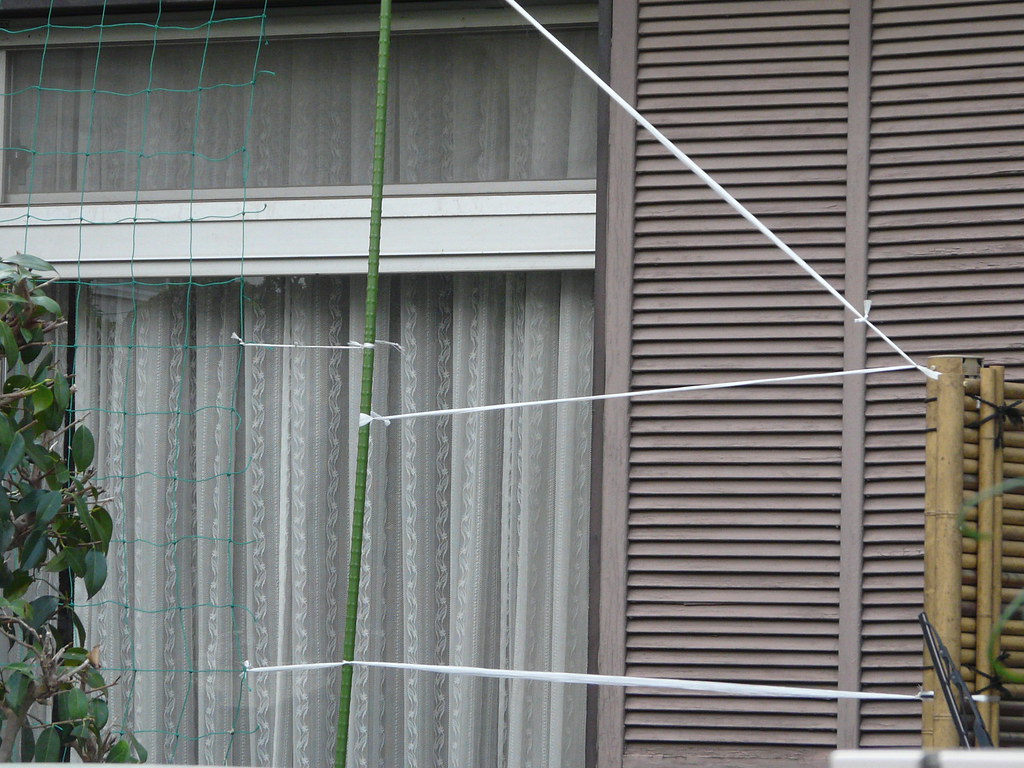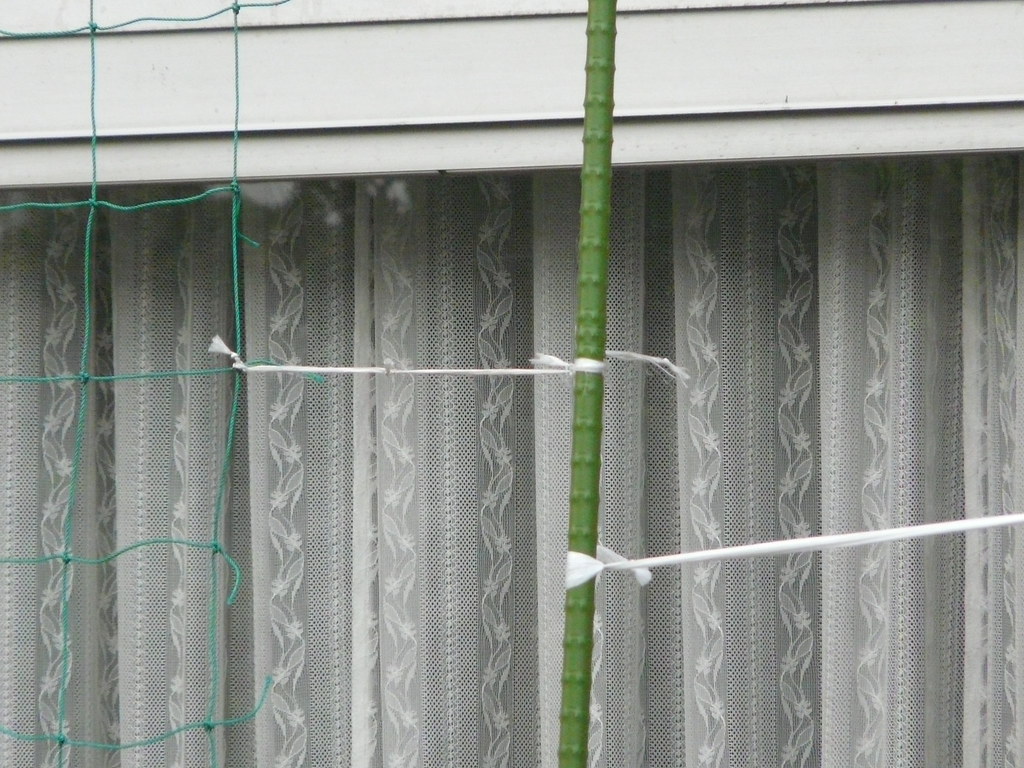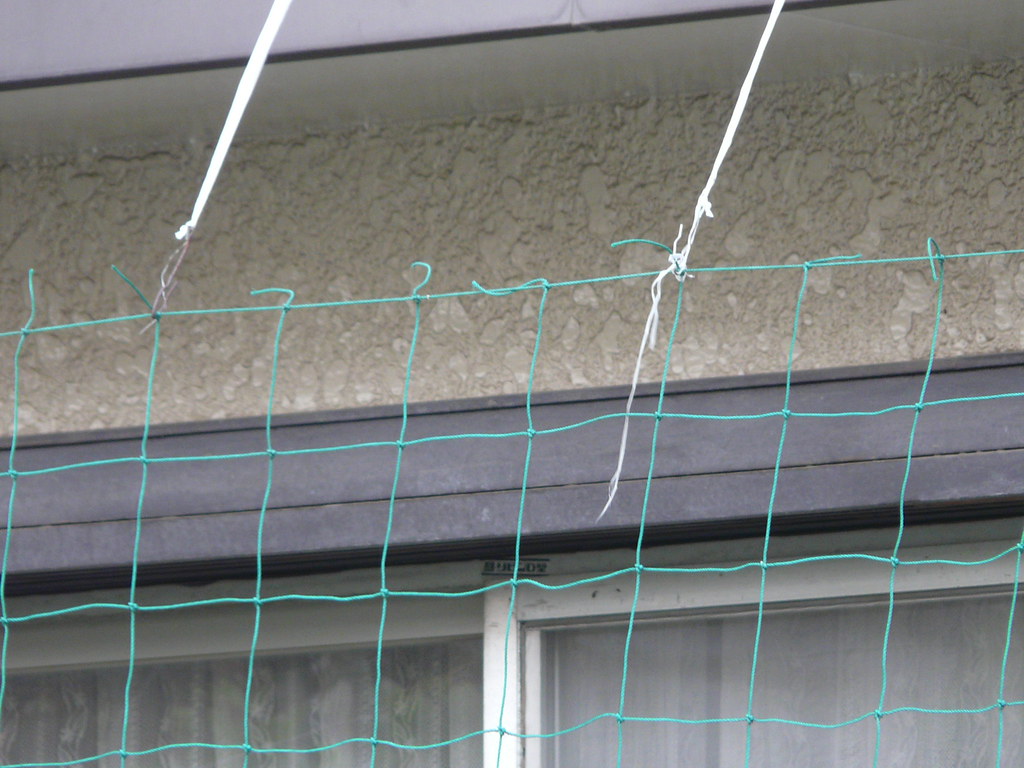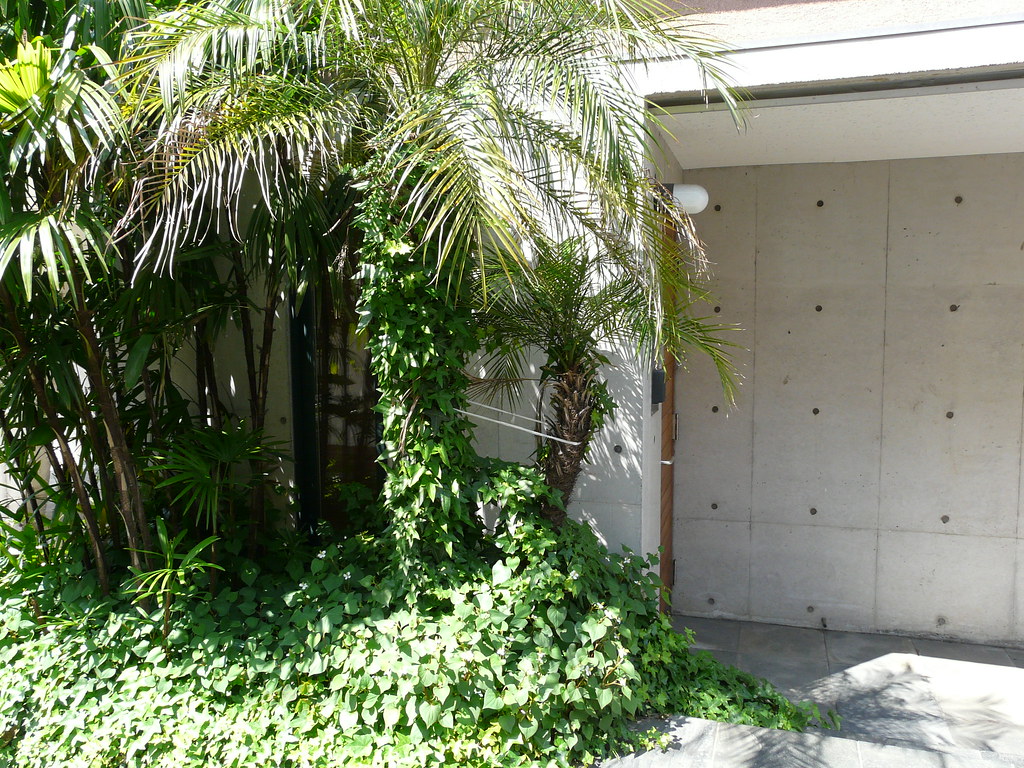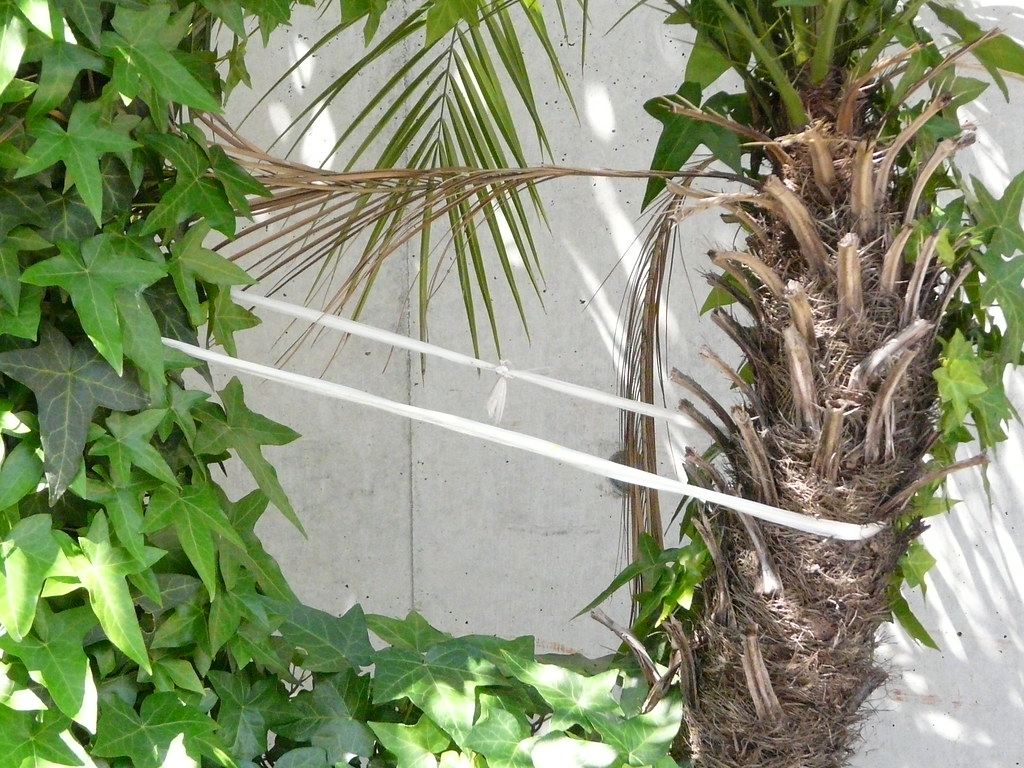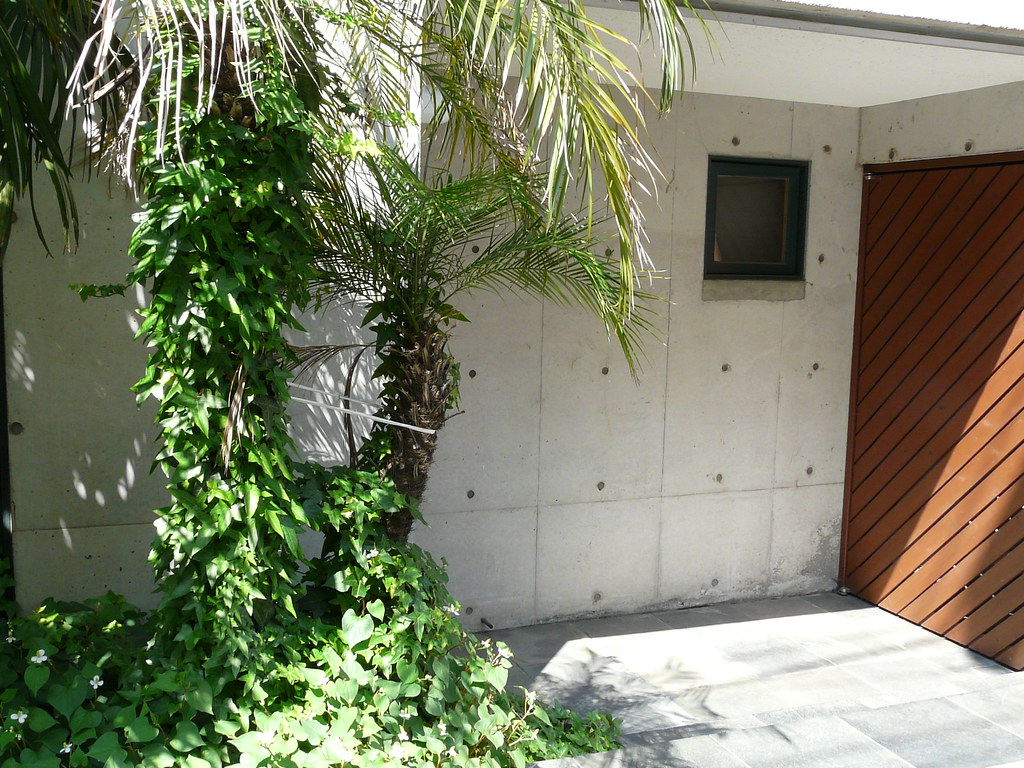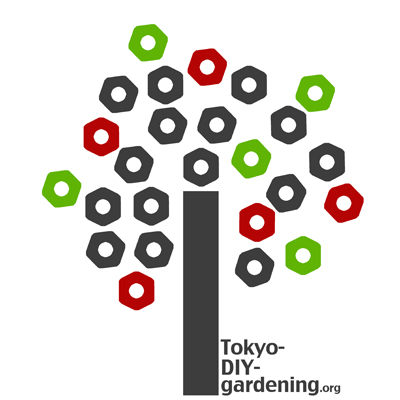Security or Stabilization? 003
Another entry in the “security or stabilization?” series..[e.g. 1], [e.g. 2].. This one looks as if it is secured to keep the tree from obstructing the front entrance.
Materials: Plastic Twine
Location: Yanaka, Tokyo
(Originally posted on Tokyo-DIY-Gardening.org)
Brick Planter
A few bricks in the right place create a living and edible space out of dead in a Yanaka lane. Basil is fast growing and pretty hardy – great for an ad hoc spot of tasty green.
Materials: Bricks
Location: Yanaka, Tokyo
(Originally posted on Tokyo-DIY-Gardening)
Planter in Wood
Constructed out of reclaimed wood this planter shell sits snugly around the oblong brown plastic planter which is ubiquitous in Tokyo and makes the curbside garden almost invisble to the casual glance.
Materials: Wood
Location: Yanaka, Tokyo
(Originally posted on Tokyo-DIY-Gardening)
Eye-Level Potplant Rack
An interesting space-saving variation on the curbside/wall garden.
A thin plank of wood rests on top of a wire fence and is secured in place with wire and string tied to the guttering and drainpipes. Extra safety is added through a long plastic gardening rod which acts as a railing along the front of the garden. Precarious yet thoughtful, this construction does not intrude into the narrow thoroughfare any further than the curb line.
Simple and non-intrusive, and the perfect height for passing pedestrians to enjoy.
Materials: Wire, String, Plank of Wood, Plastic Garden Rod
Location: Nakano, Tokyo
(Originally posted on Tokyo-DIY-Gardening)
Street Corner Tomato Construction
Simply constructed tomato garden – collection of standard plastic covered metal rods used for gardening. The rods pierce the old corrugated plastic awning to stabilize the structure.
Materials: Plastic Stake
Location: Sendagaya, Tokyo
(Originally posted on Tokyo-DIY-Gardening)
Curbside Embedded Pots
On an innner-Sendagaya street lies this colourful curbside garden. Another lovely example of a local resident taking the time to brighten up a lonely curbside.
What made this particular garden stand out is the fact that it is composed entirely of plants still in their garden center pots and plastic containers.
One would imagine that the plants would grow better repotted directly into the ground, but perhaps the existing soil is of too-poor quality to allow this. An alternative explanation might be that this is the gardener’s compromise between a ‘potscape‘ and a full-blown regular garden – less intrusive than a whole lot of pots on the sidewalk, while still retaining the flexible, temporary feel of most Tokyo pot-plant gardens…..possibly repotting the plants felt like too much of a brash appropriation for the gardener involved….. (in the last image you can see one plant finally breaking (being set?) free of its contraints – I wonder how long it will last in the ‘real world’)
Any other ideas?
Materials: Potplants
Location: Sendagaya, Tokyo
(Originally posted on Tokyo-DIY-Gardening)
Seedling Protection in Laundry Net
Simple and effective use of a 100 Yen laundry net to protect seedlings from insects, birds and whatever other dangerous elements the street may bring.
This solution is a great illustration of the inventive and strongly practical use/reuse of a familiar and cheap mass-produced item in urban gardening.
Materials: Laundry Net
Location: Nakano, Tokyo
(Originally posted on Tokyo-DIY-Gardening)
Trackside Asagao Space
Along the narrow no-man’s-land between the railway track fencing and the road there is just enough space for residents of the house that lies directly opposite to create an asagao (morning glory) garden.
Constructed of plastic/metal gardening rods, bamboo and plastic twine this simple 3m x 1.5m (approx.) construction provides the right amount of support for the plants to climb and bloom. I like that the seed packet has been left at the base of the plant to let pedestrians know what is growing (or maybe it is a reminder to the gardener).
This is a great example of the affordable, productive, and enjoyable appropriation of unused/unusable space that is characteristic of Tokyo DIY gardening.
Materials: Plastic Stake, Bamboo, Plastic Twine
Location: Akishima, Tokyo
(Originally posted on Tokyo-DIY-Gardening)
Pocket Garden in Astroturf
This pocket garden perched on a residential fence is home to two healthy seedlings. The planter is constructed from an astroturf off-cut attached to the trellis fence with thin wire.
A simple and effective use of waste material.
Materials: Wire, Astroturf
Location: Akishima, Tokyo
(Originally posted on Tokyo DIY Gardening)
Preparing a Green Curtain
A large scale foundation for creeping greens constructed from simple materials – netting, plastic twine, and plastic rods. Coming up to, and through, the summer the climbers should take over this frame, creating shade and privacy in the summer months (like a living sudare (簾:すだれ)).
Materials: Netting, Plastic Twine, Plastic Rods
Location: Kokubunji, Tokyo
Hanging Garden in Pots and Wire
This lush road facing garden has a hanging component which demonstrates a number of ways to use wire to fix pot plants in precise locations.
In the third image, wire is threaded through an opening on the rim of one pot, and twisted around the window grate to secure it in place. Nearby, wire is twisted directly around the hook of a larger hanging pot to place it at the desired level. Below, in the fourth image, a more secure hanging construction is formed by wrapping wire around the pot, under the rim and then attaching a larger hook made of wire arching over the top.

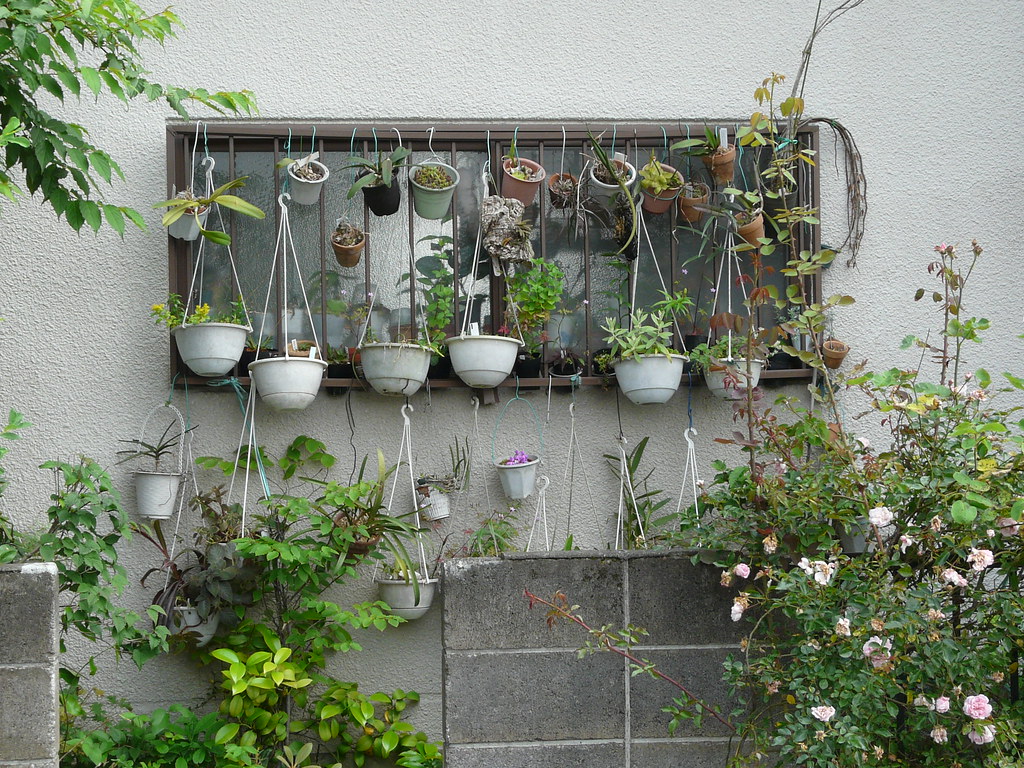
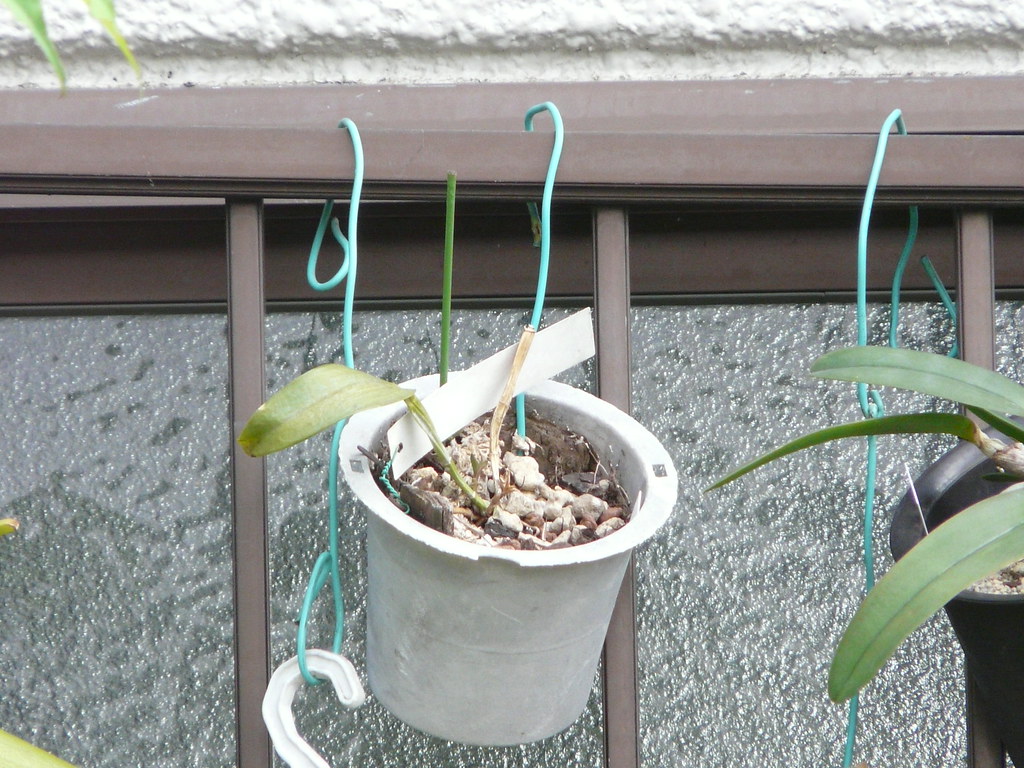

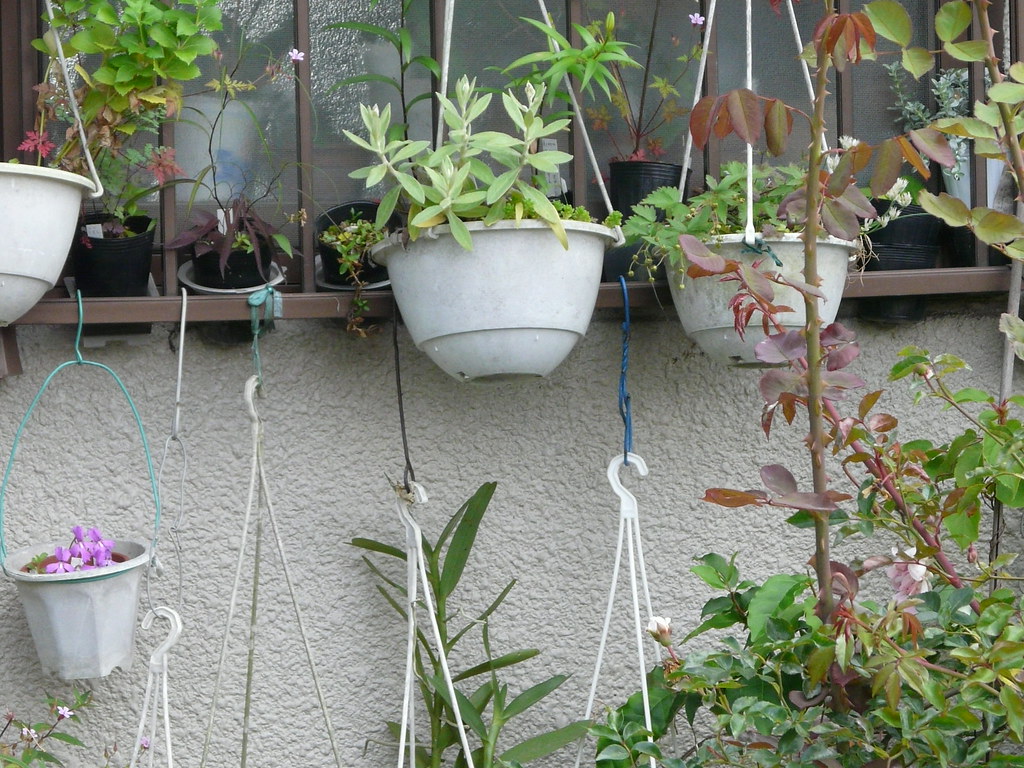
Materials: Wire
Location: Kokubunji, Tokyo
(Originally posted on Tokyo-DIY-Gardening.org)
Tree Training
Trees are trained away from the driveway of a high-end residence in Shibuya with a length of string.
No matter the value of the real estate, the gardening fixes tend to be the same……
Materials: String
Location: Shibuya, Tokyo
(Oringinally posted on Tokyo-DIY-Gardening)

